Framing your home with a thoughtfully designed front yard flower bed not only boosts curb appeal but also adds biodiversity, moderates soil temperature, and signals the style that awaits beyond the threshold. Landscape experts emphasize “right plant, right place,” encouraging blends of structure, color, and seasonality so the bed looks alive spring through winter. Layering heights, weaving in evergreens, and repeating colors guide the eye, while drought-tolerant or native choices slash maintenance time and water bills. Whether you lean cottage-romantic or modern-minimalist, the twenty ideas below show how small design tweaks—edging, theming, or strategic hardscape accents—can turn that narrow strip of soil into the neighborhood’s most-noticed showcase.
1. Curved Cottage-Style Flower Bed Border
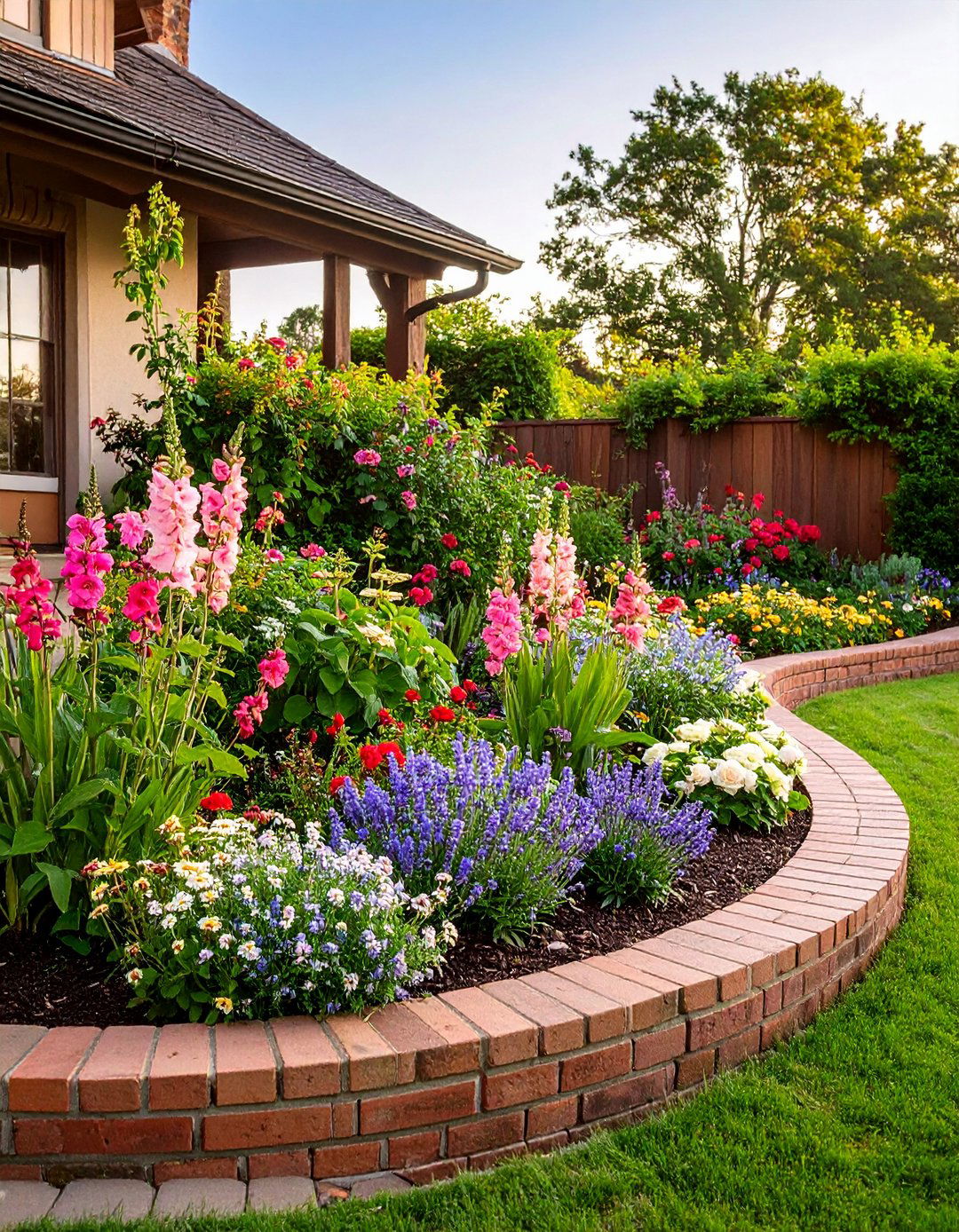
A graceful curve instantly softens straight sidewalks, and a cottage-style front yard flower bed thrives on informal abundance. Start by marking a gentle S-shape with a hose, then plant voluptuous bloomers such as coneflower, salvia, and roses in loose drifts. A mix of heights—tall hollyhocks at the back, airy cosmos mid-bed, creeping thyme at the edge—creates depth while letting every plant shine. Finish the curve with brick or natural-stone edging to keep mulch tidy and mowing simple. Leave small pockets for self-seeders; their surprise volunteers reinforce the relaxed aesthetic year after year with almost no effort.
2. Layered Height Flower Bed Design

Think of this front yard flower bed as a theater stage: tallest performers to the rear, midsize stars in the middle, and ground-huggers stealing the foreground. Tall ornamental grasses or shrub roses provide a year-round backdrop, mid-level perennials like daylilies deliver color for months, and trailing alyssum or sedum spill over the front edge. Repeating plant groups in threes keeps the vignette cohesive. Mulch deeply between layers to discourage weeds and retain moisture, then spotlight the tiers at night with low-voltage uplights for dramatic shadows. The structure means even winter stems look architectural instead of untidy.
3. Formal Symmetrical Flower Bed Layout
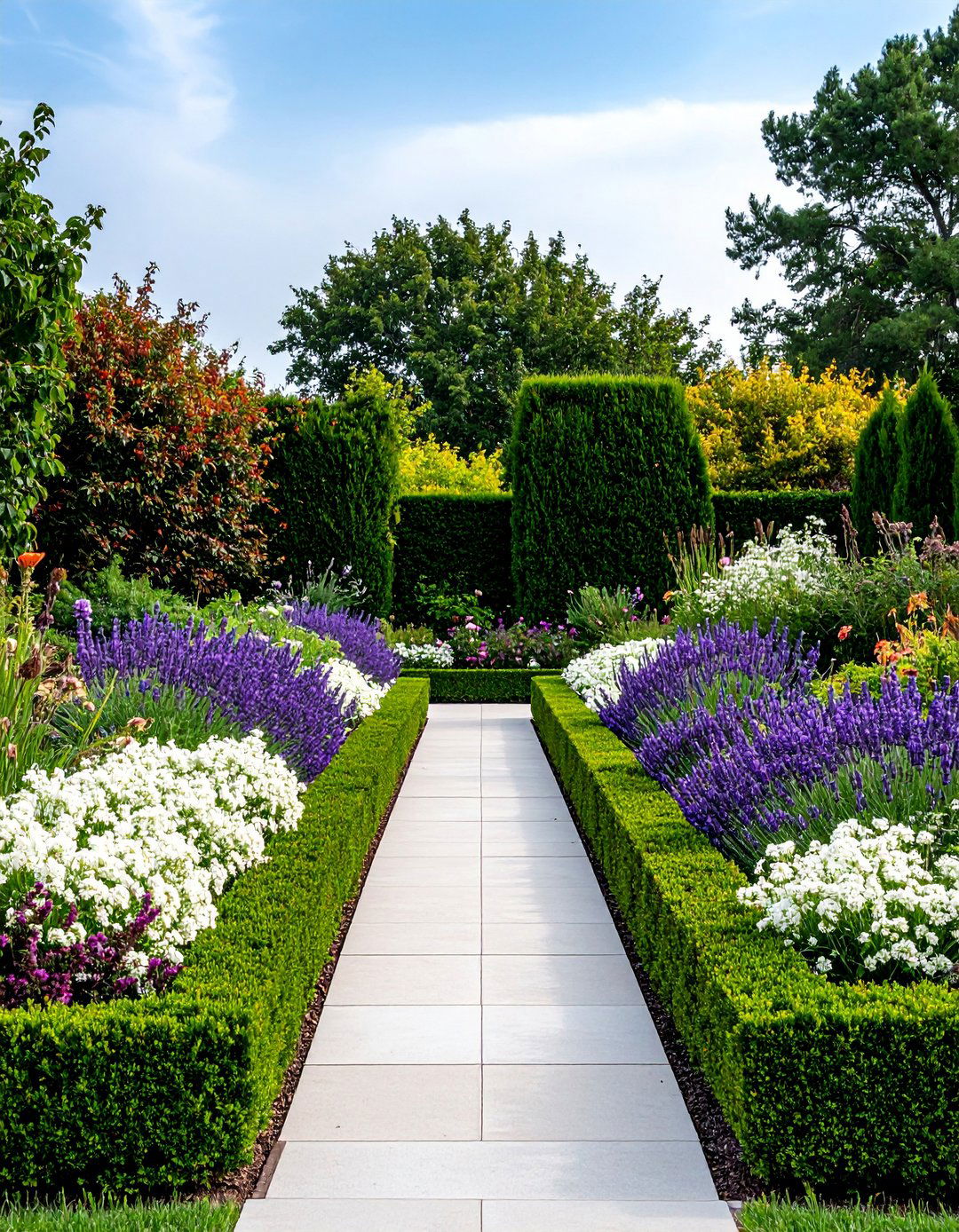
If your façade features strong lines—brick columns, centered door, twin windows—echo that balance with a formal front yard flower bed. Mirror-image rectangles framed in clipped box or dwarf yaupon give instant order. Inside, restrict the palette to two or three colors: perhaps white annuals flanking purple salvia rows. Keep spacing even and heights consistent; formality relies on precision more than plant variety. Replace spent annuals all at once so symmetry never slips. The result feels elegant rather than fussy and pairs beautifully with period or contemporary architecture alike.
4. Native Wildflower Strip Flower Bed
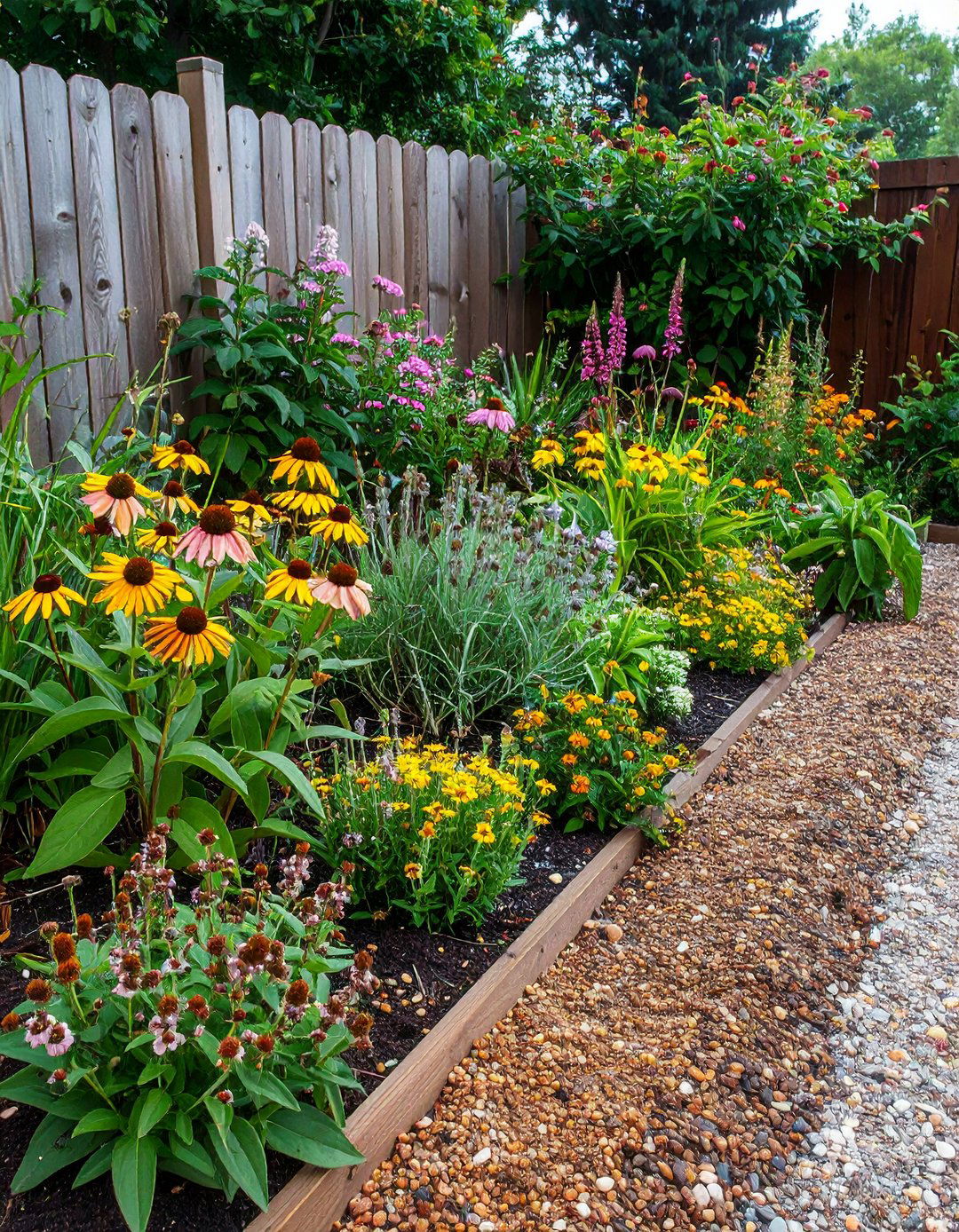
Swap part of the lawn for a narrow native wildflower front yard flower bed to attract butterflies, bees, and birds. Loosen soil, scatter a region-specific seed mix, then top with a thin straw layer to deter birds until germination. Because natives evolved locally, they shrug off pests and supplemental irrigation once established. Mow or string-trim the patch in late winter to reseed naturally and maintain tidy edges so neighbors see intentional design rather than neglect. Expect nonstop motion: goldfinches nibbling coneflower seeds and hummingbirds sipping penstemon.
5. Evergreen Anchor Flower Bed
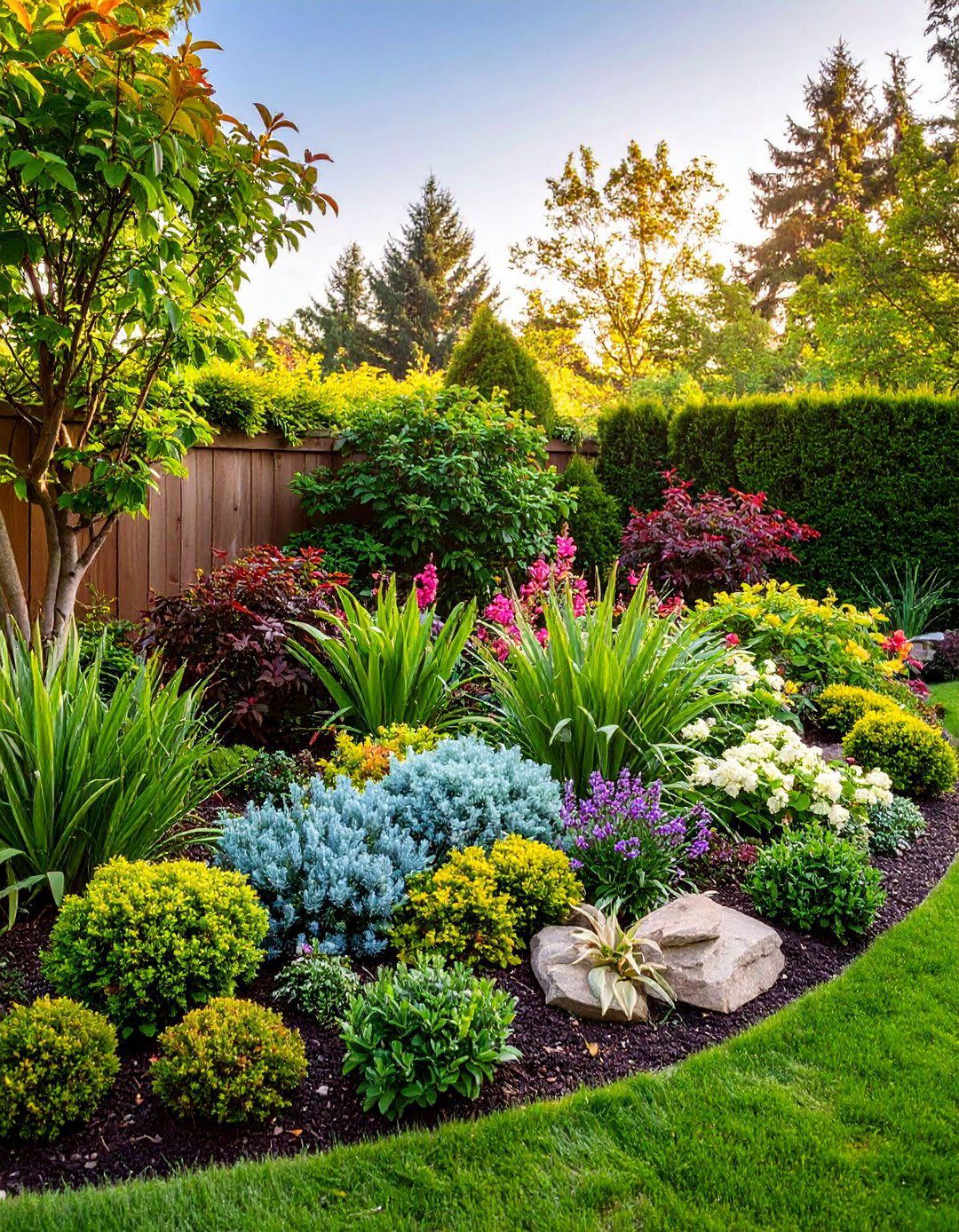
An all-season front yard flower bed starts with dependable anchors. Position dwarf evergreens—box, juniper, or compact hollies—at corners or beside steps, then weave flowering perennials between. The shrubs give height, block winter wind, and keep the bed looking “alive” when perennials die back. Choose contrasting textures: feathery arborvitae next to broad-leafed hellebores, for example. Prune lightly in early spring to retain shape without sacrificing new growth. The evergreens also frame holiday lights or seasonal decor without extra stakes.
6. Pollinator-Friendly Flower Bed
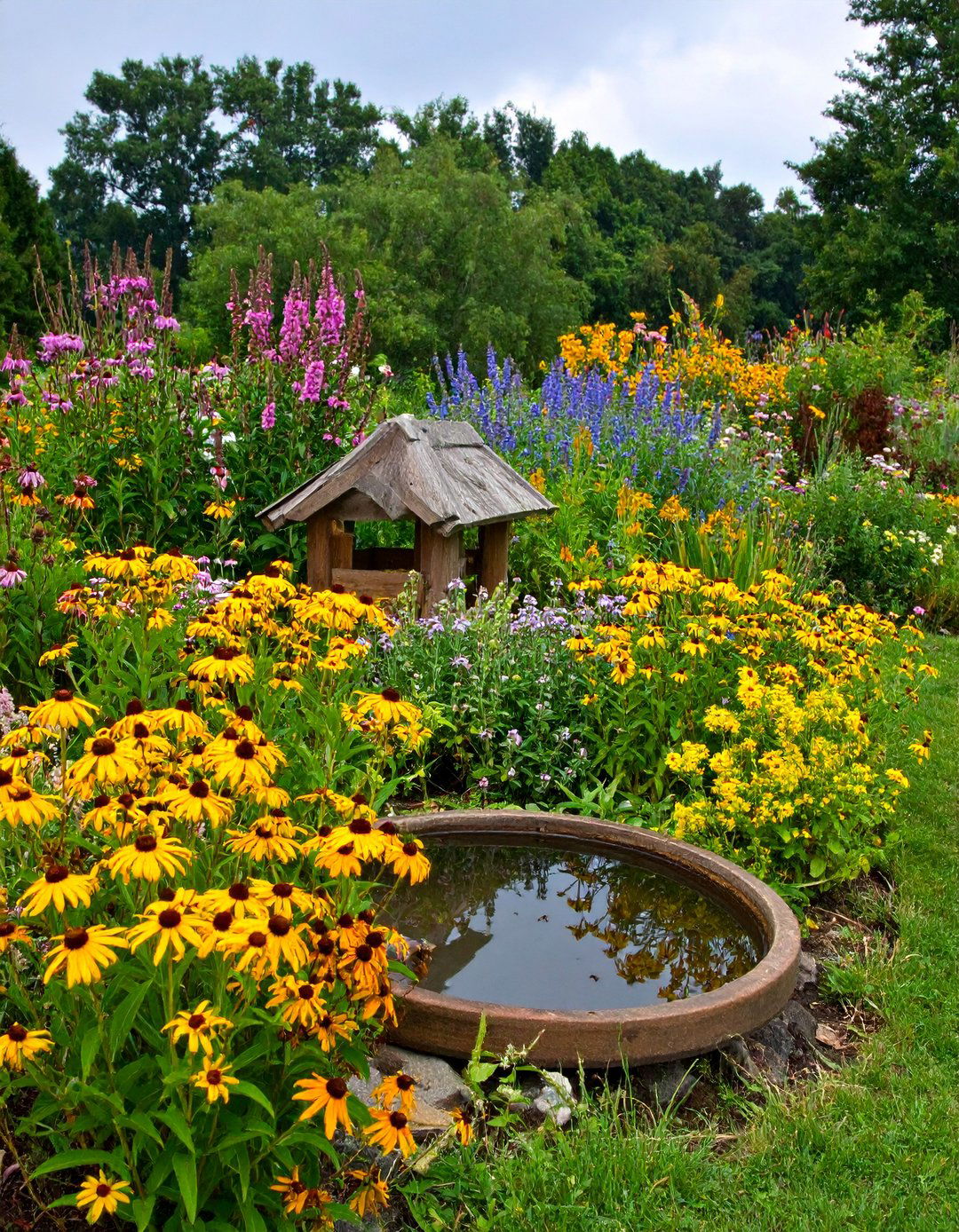
Design a front yard flower bed as a refueling station by offering overlapping bloom times from early spring bulbs to late-fall asters. Include nectar-rich natives like milkweed, bee balm, and goldenrod plus larval host plants where butterflies lay eggs. Avoid pesticides, mulch lightly so ground-nesting bees can tunnel, and add a shallow water dish with pebbles for safe sipping. The constant buzz not only helps local ecosystems but also adds gentle movement and sound for homeowners.
7. Drought-Tolerant Low-Maintenance Flower Bed
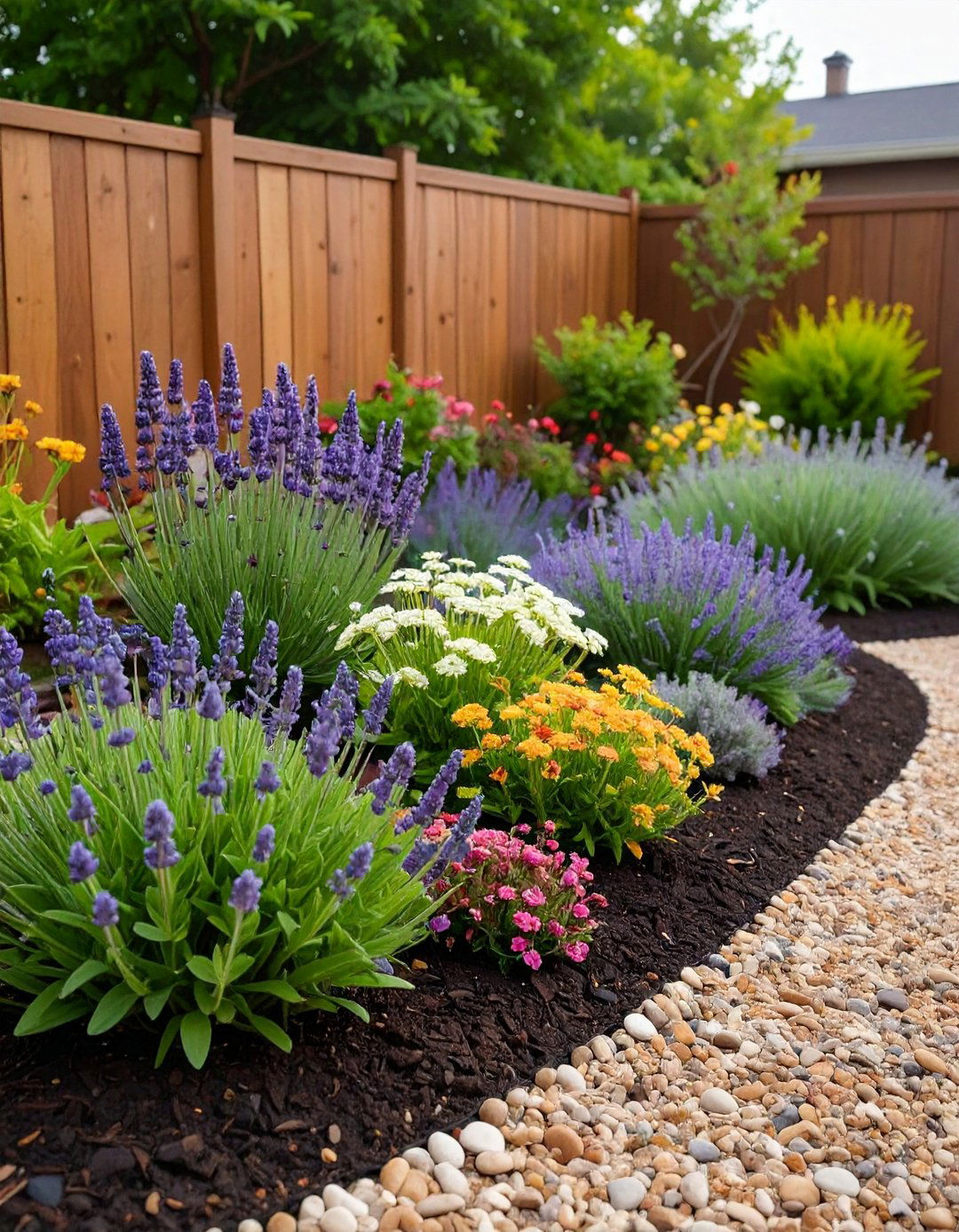
In arid zones—or for anyone who hates lugging hoses—choose a xeric front yard flower bed. Start with gravel or decomposed-granite mulch to improve drainage and reflect heat. Plant clumping ornamental grasses, lavender, yarrow, and hardy succulents like sedum; most thrive on rainfall alone once roots run deep. Group thirstier species near a hidden drip line for strategic sipping. Replace water-hungry turf along the bed’s edge with permeable pavers, cutting summer irrigation bills dramatically.
8. Monochromatic Color-Themed Flower Bed
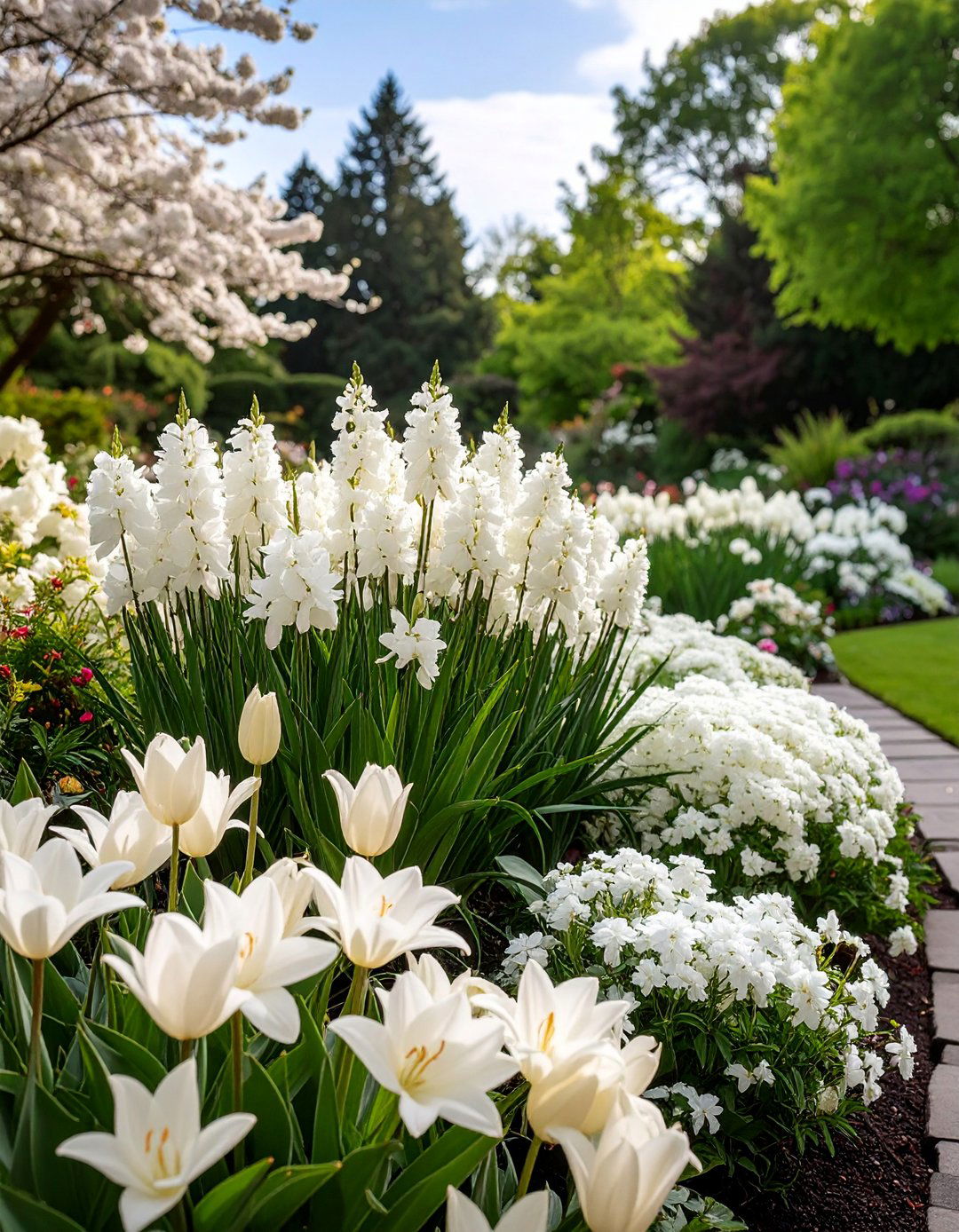
Choosing one dominant hue—say, all whites or hot tropical reds—gives a front yard flower bed instant designer polish. Play with tone and texture instead of color contrast: frothy white gaura beside glossy white phlox, silvery lamb’s ears under ivory tulips. A single-color plan feels larger because the eye travels uninterrupted. Add dark foliage plants behind pale flowers to heighten the glow, especially under porch lights. Refresh the theme yearly by swapping annuals without disturbing the permanent backbone.
9. Night-Blooming Moon Garden Flower Bed
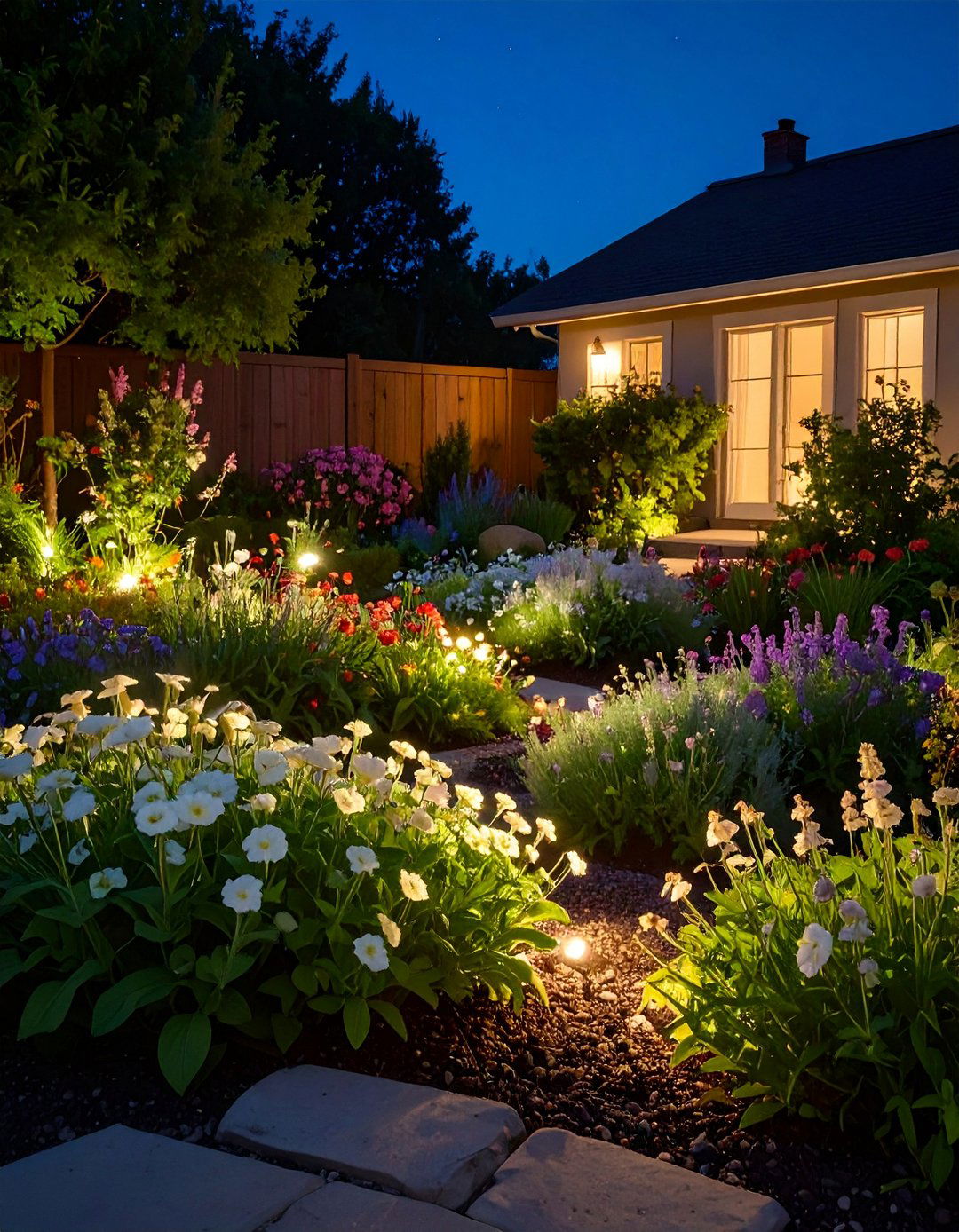
Imagine stepping onto the porch after sunset and seeing your front yard flower bed shimmer. A moon-garden bed features white or silver foliage like artemisia and dusty miller plus night-bloomers such as moonflower, four-o’-clocks, and fragrant nicotiana. Position a small bench or path light to reflect petals and invite evening relaxation. Include a softly trickling pot fountain; water mirrors moonlight and masks street noise. This nocturnal palette also aids moth and bat pollinators often overlooked in daytime planning.
10. Seasonal Rotation Flower Bed
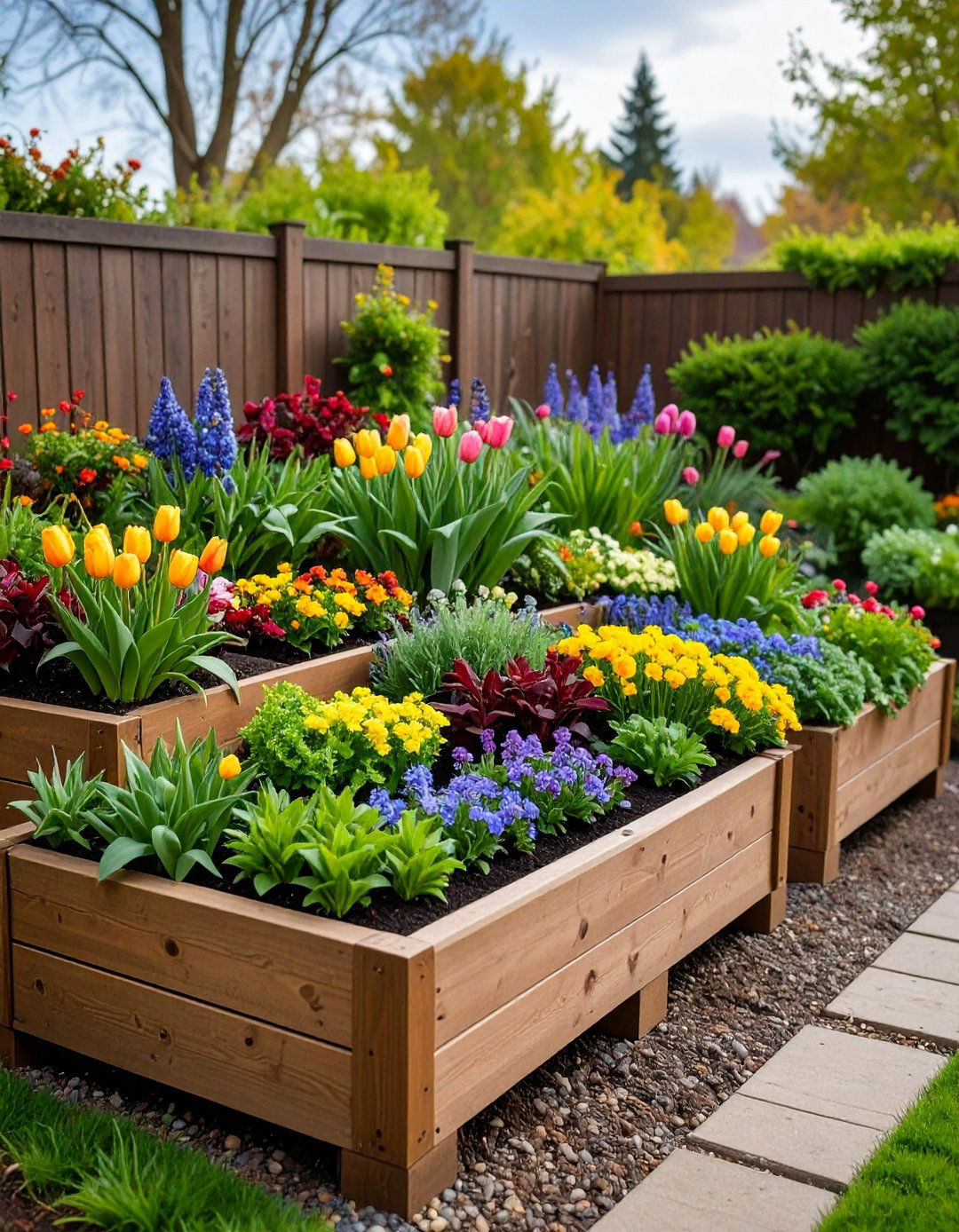
For homeowners who crave constant novelty, create a front yard flower bed with rotating inserts. Install permanent edging and fill most of the space with easy perennials like coreopsis and heuchera, leaving several framed “pockets.” In spring, drop in potted tulips; replace them with summer annuals, then swap again for fall mums or ornamental kale. The pocket system prevents soil disturbance, speeds change-outs to minutes, and lets you experiment with trends without a full redesign.
11. Raised Stone-Edged Flower Bed
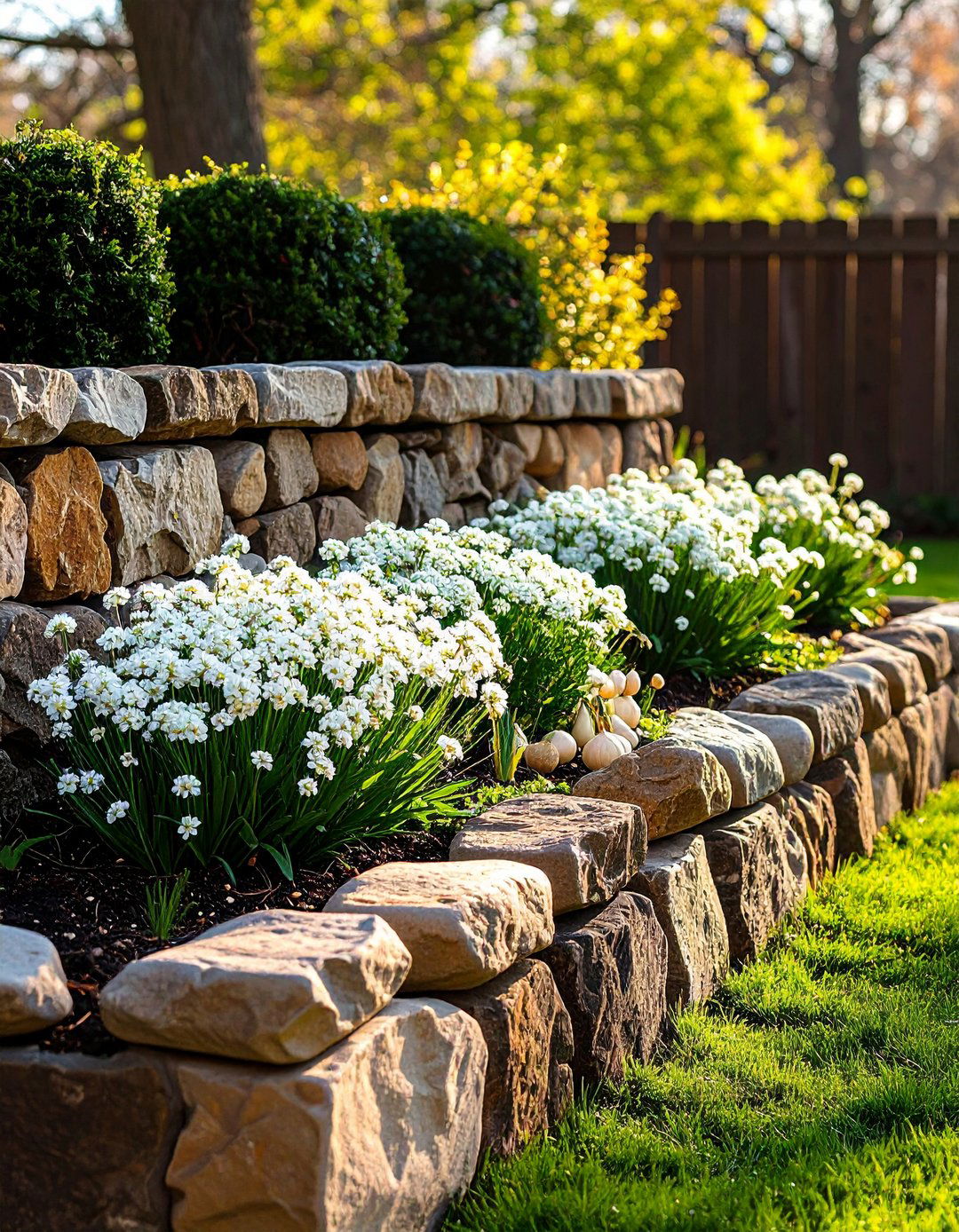
A low stone wall—fieldstone, limestone, or stackable blocks—instantly elevates a front yard flower bed both literally and visually. The structure improves drainage, warms soil sooner for earlier blooms, and defines space along a sloping lawn. Fill with rich mix to give shallow-root plants extra depth, then trail cascading alyssum over the wall for a soft finish. Tuck frost-resistant bulbs beneath for surprise spring color emerging between stones.
12. Mixed Shrub-and-Perennial Flower Bed
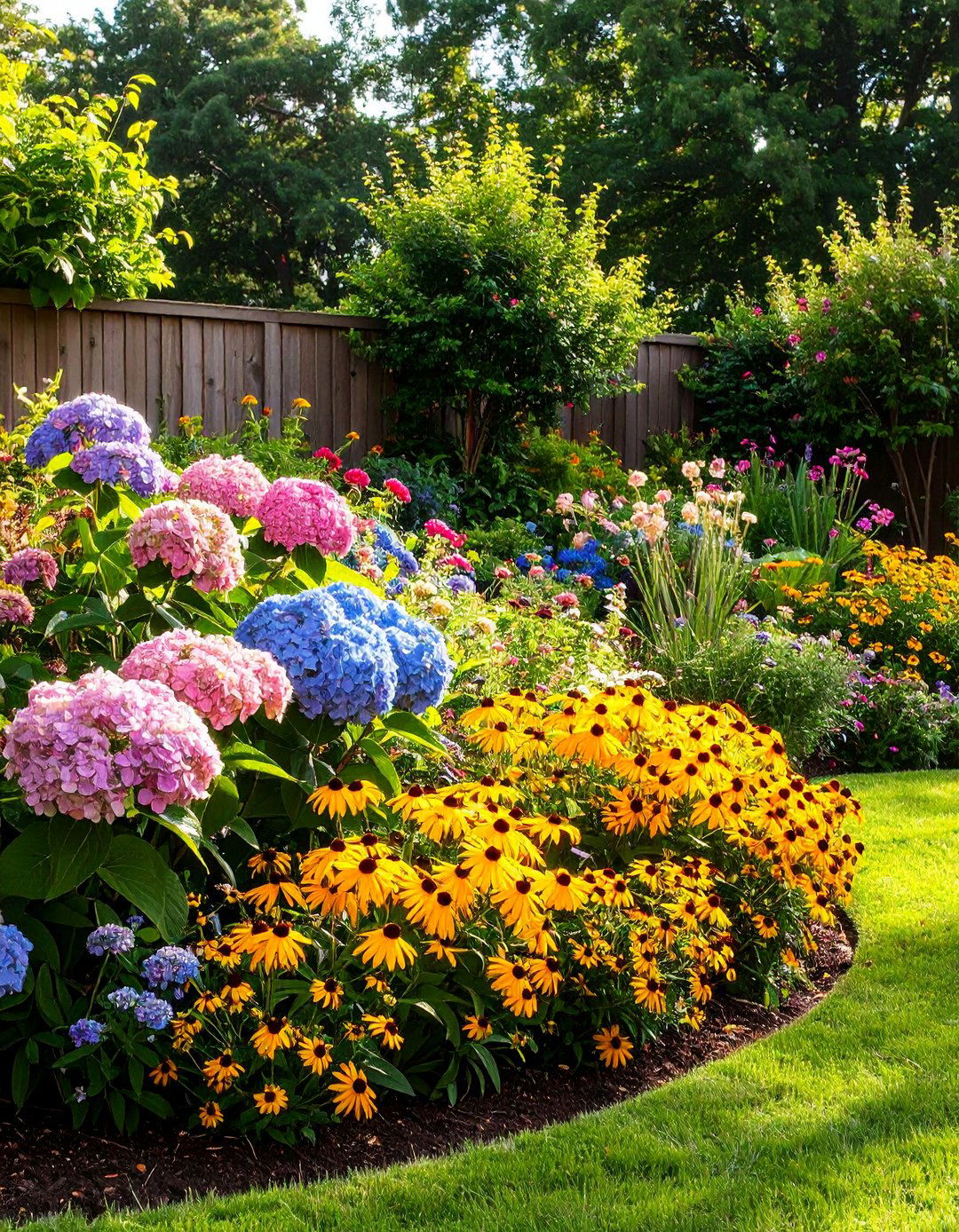
Blend woody shrubs with herbaceous perennials so your front yard flower bed never looks bare. Shrubs such as dwarf spirea, hydrangea, or ninebark add bones and height; perennial companions like echinacea and black-eyed Susan weave color between. Layer tallest shrubs at back corners, mid-height varieties mid-bed, and groundcovers up front. Fertilize shrubs in early spring; deadhead perennials through summer for repeat blooms. The variety diversifies bloom time and supports wider wildlife.
13. Herb-and-Flower Fusion Bed

Edible meets ornamental when basil, thyme, and purple sage mingle with zinnias and marigolds in a front yard flower bed. Herbs deter certain pests and release fragrance as guests brush past. Plant in blocks for harvest efficiency and repeat colors—golden oregano beside yellow calibrachoa—to unify the look. Prune herbs weekly to prevent woodiness; those cuttings head straight to the kitchen, closing the loop between landscape and table.
14. Vertical Small-Space Flower Bed
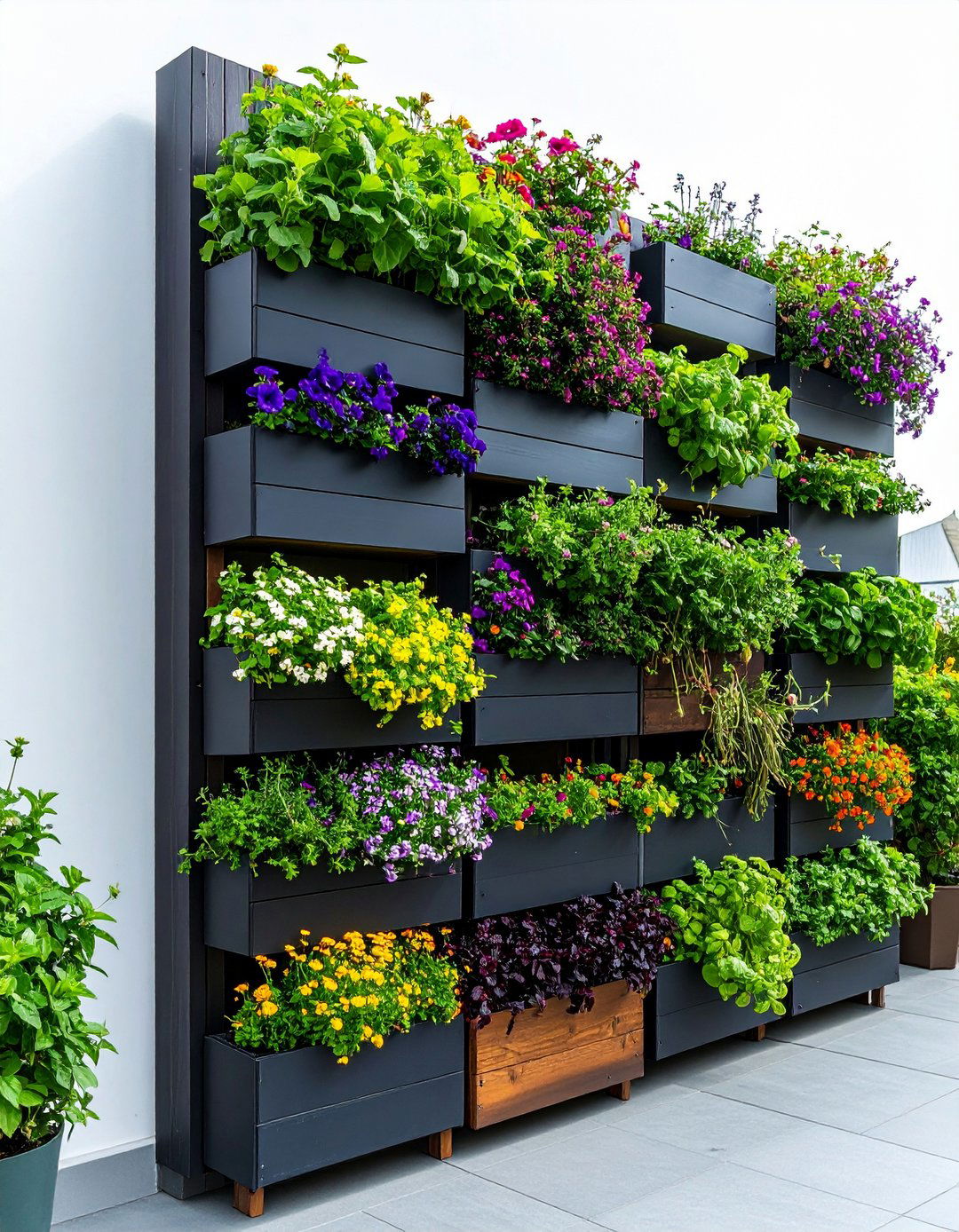
Narrow lot? Go up. Attach modular pockets, stacked planters, or a cedar trellis anchored in the bed to transform a tight front yard flower bed into a vertical tapestry. Trailing petunias spill from upper tiers while compact herbs fill mid-levels. Keep drip emitters running down the frame so watering remains effortless. A tall screen also hides utility meters or brightens blank fences without stealing walkway width.
15. Corner Accent Flower Bed

If a front corner feels empty, carve out a triangular front yard flower bed punctuated by an ornamental tree—perhaps Japanese maple or small crepe myrtle. Underplant with shade-loving hydrangeas, ferns, and impatiens for layered interest. The bed guides eyes around the property line and softens hard angles of driveway or sidewalk intersections. Maintain tree canopy at head height to avoid traffic sight-line issues while still framing the street view with blooms.
16. Pathway-Flanking Flower Beds
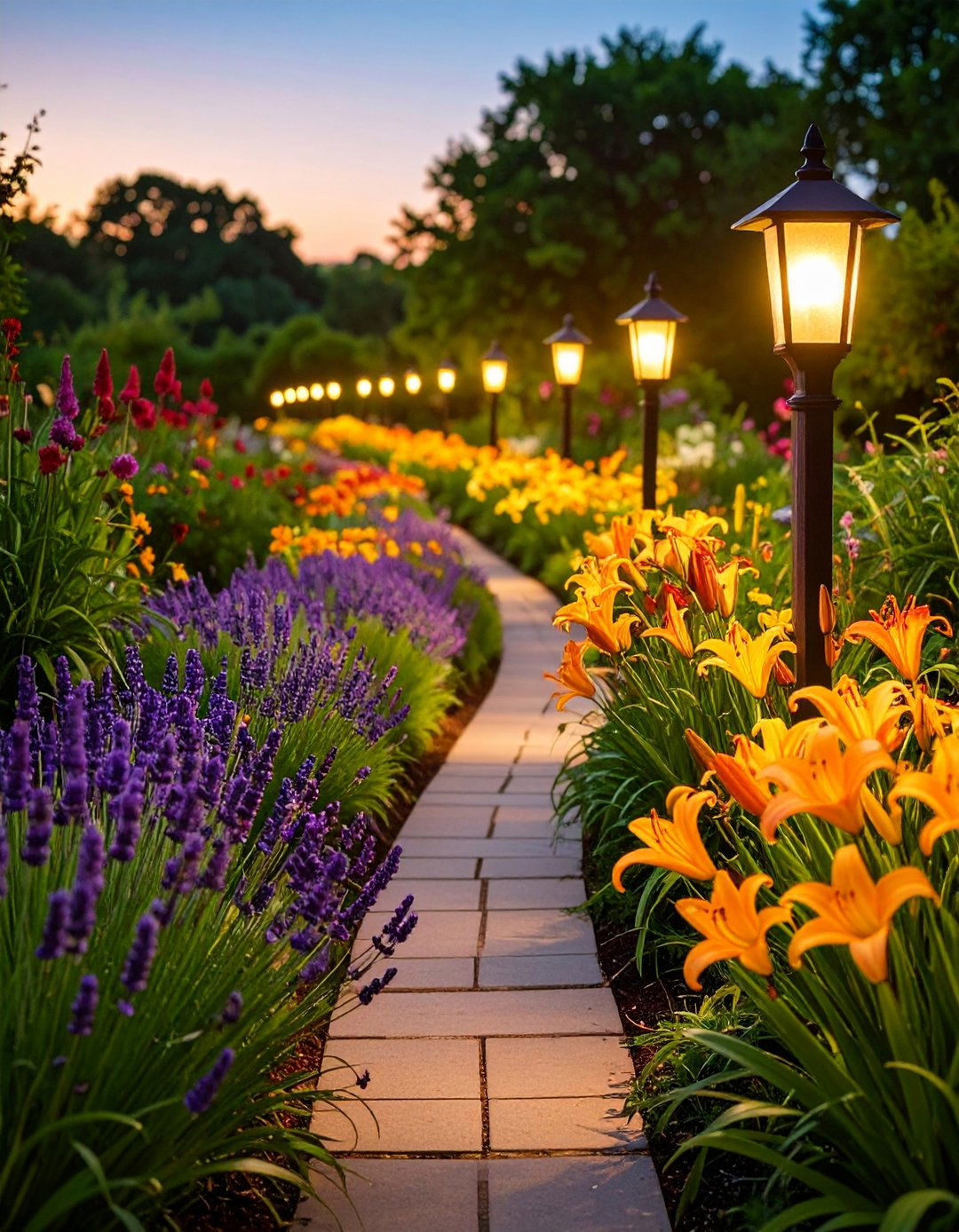
Twin ribbon-beds edging your front walk create a grand, yet inviting, approach. Alternate clumps of lavender and dwarf daylilies for fragrance and long bloom, keeping centers open so foliage never crowds pedestrians. Repetition every three feet maintains rhythm, while a contrasting mulch stripe highlights the walkway’s shape. Solar path lights tucked behind plants illuminate flowers at dusk without glare.
17. Foundation-Softening Flower Bed
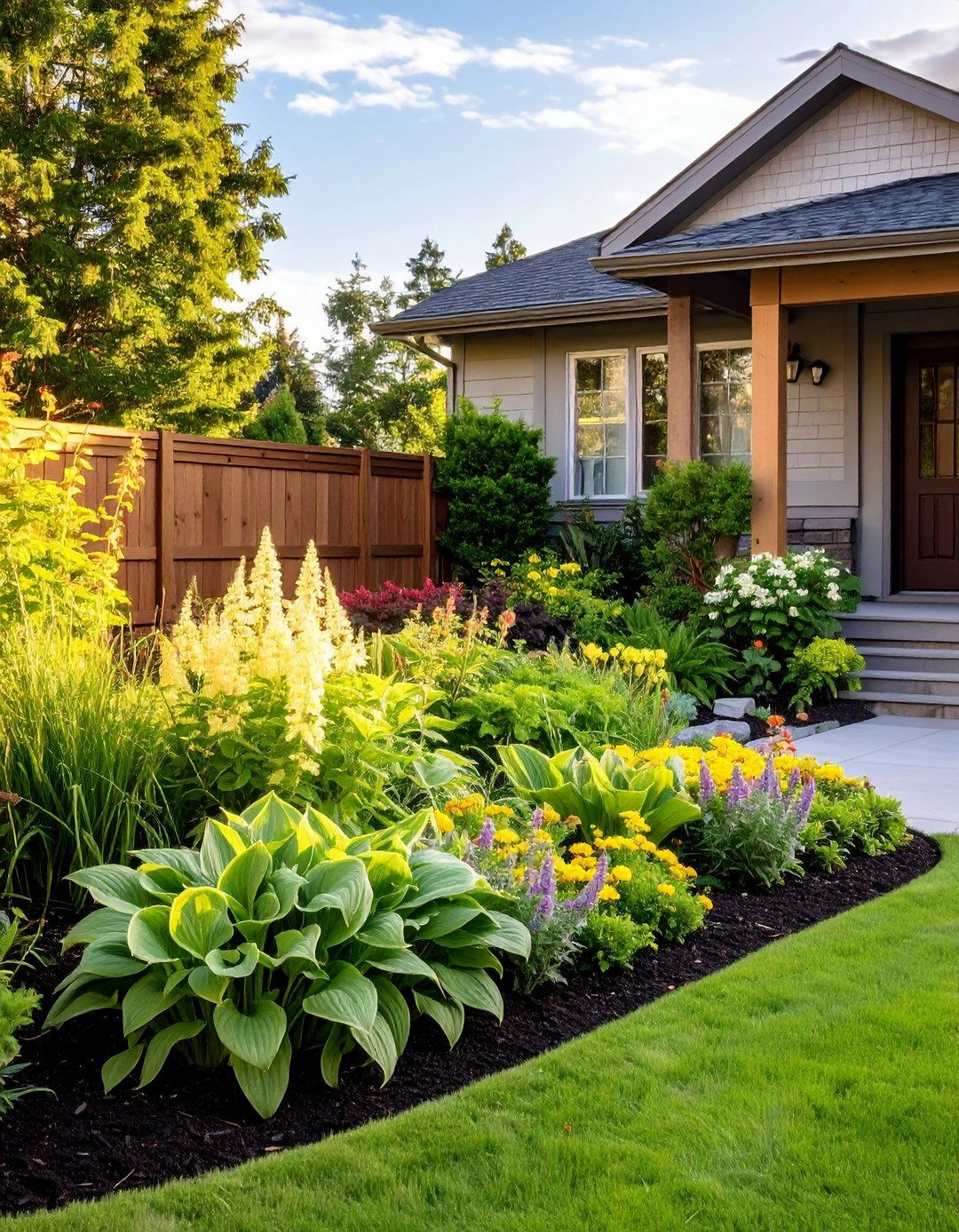
A foundation front yard flower bed hides bare house walls and moderates interior temperatures by shading masonry. Start at least three feet from the foundation to avoid moisture problems, then layer from tallest evergreens nearest the wall to dwarf perennials along the lawn edge. Select varieties tolerant of dripline shade—hostas under eaves, astilbe for filtered light. Incorporate decorative stones for winter texture when perennials sleep.
18. Rock Garden Fusion Flower Bed

Merge low-maintenance rocks with pockets of color for a drought-smart, artistic front yard flower bed. Nestle succulents, creeping phlox, and hens-and-chicks among river rocks or granite boulders. The stones capture heat for alpine plants, deter weeds, and visually anchor the bed on windy sites. Layer sizes—gravel mulch, fist-size cobbles, statement boulders—for a natural gradient that looks collected, not dumped.
19. Container Cluster Flower Bed
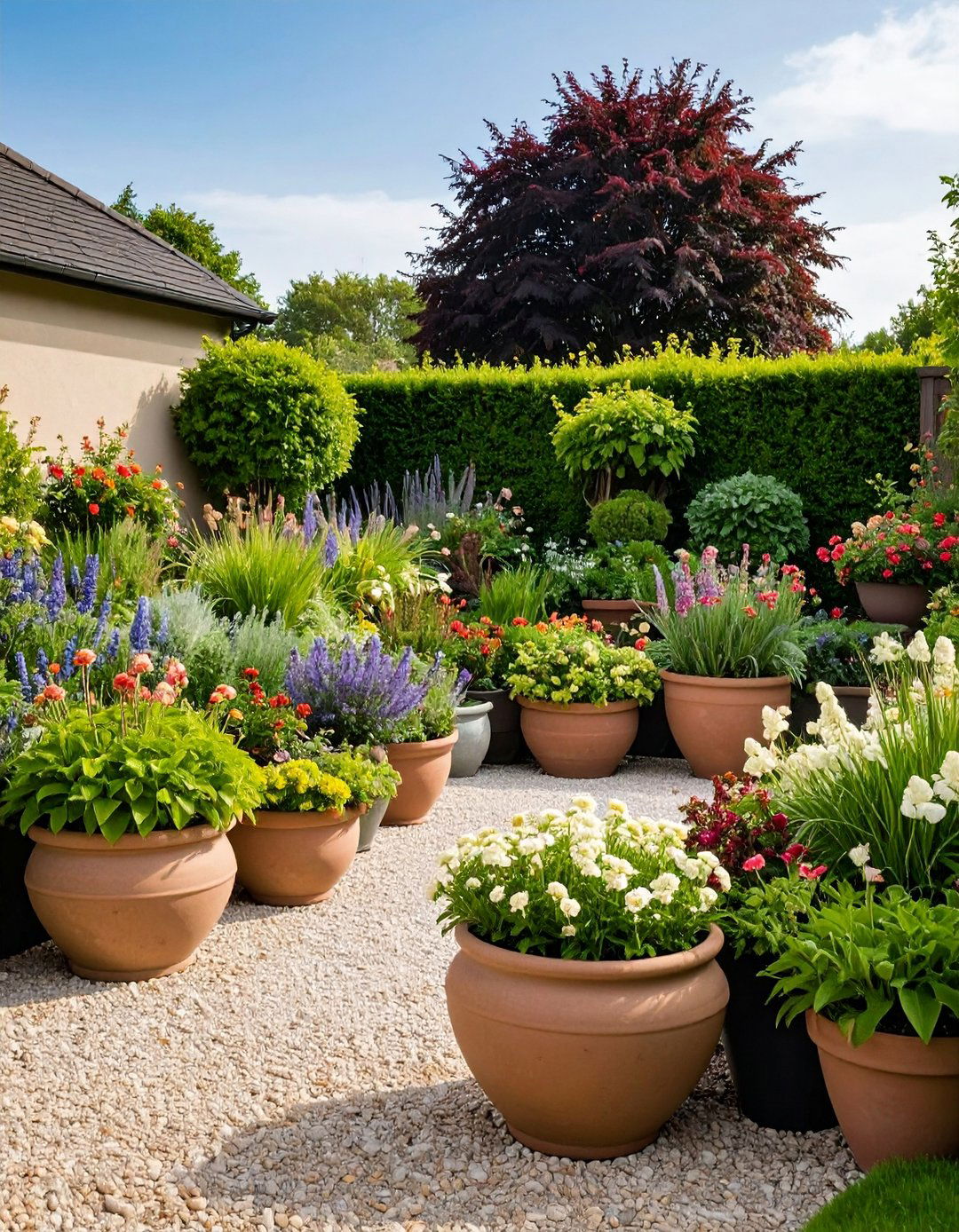
Group tall urns, low bowls, and midsize pots within your front yard flower bed to create instant height without permanent excavation. Containers let you adjust soil pH per plant—acid lovers like azaleas in one, Mediterranean herbs in another. Cluster odd-numbered pots on a gravel pad, then weave groundcovers between to blur boundaries. Swap containers seasonally for a fresh look with zero replanting fuss.
20. Water Feature Companion Flower Bed

Pairing a bubbling urn, rill, or birdbath with a surrounding front yard flower bed adds motion, sound, and wildlife magnetism. Site the feature slightly off-center for a relaxed vibe, then plant moisture-loving flowers—lobelia, Japanese iris, Colocasia—closest to splash zones. Use taller grasses behind the fountain as a green backdrop that highlights rippling water. A subtle underwater light transforms ordinary curb appeal into nighttime drama.
Conclusion:
A memorable front yard flower bed marries beauty with practical stewardship: selecting climate-appropriate plants, layering forms for year-round interest, and giving pollinators a seat at the table. Whether you lean on classic symmetry, wild drifts, or inventive verticals, each idea above shows that a few strategic choices—anchoring evergreens, thoughtful edging, or a well-placed water accent—turn empty soil into a living welcome mat. Let these concepts inspire you to craft a bed that reflects your style, respects local conditions, and delights every passerby from dawn to moonlit dusk.


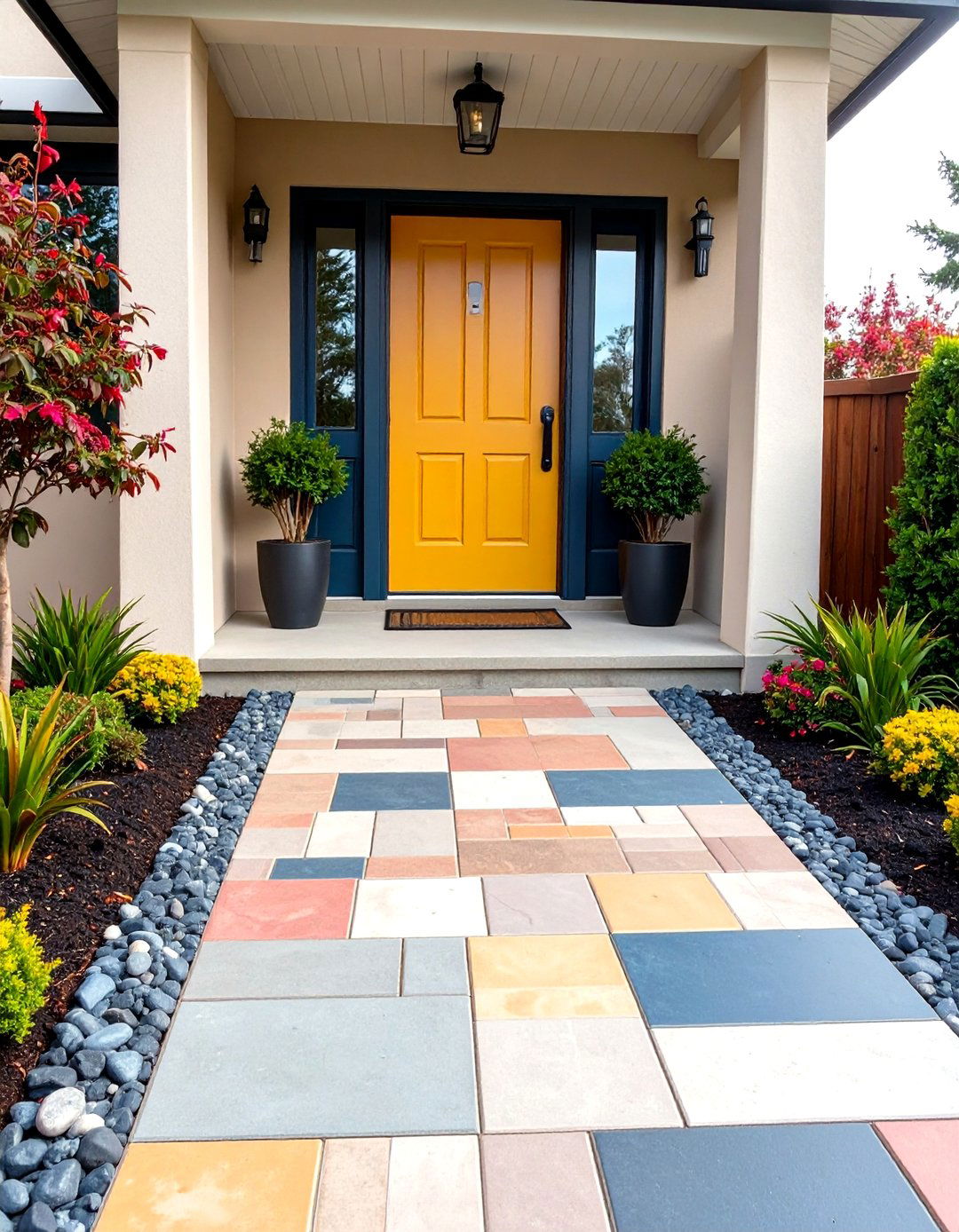

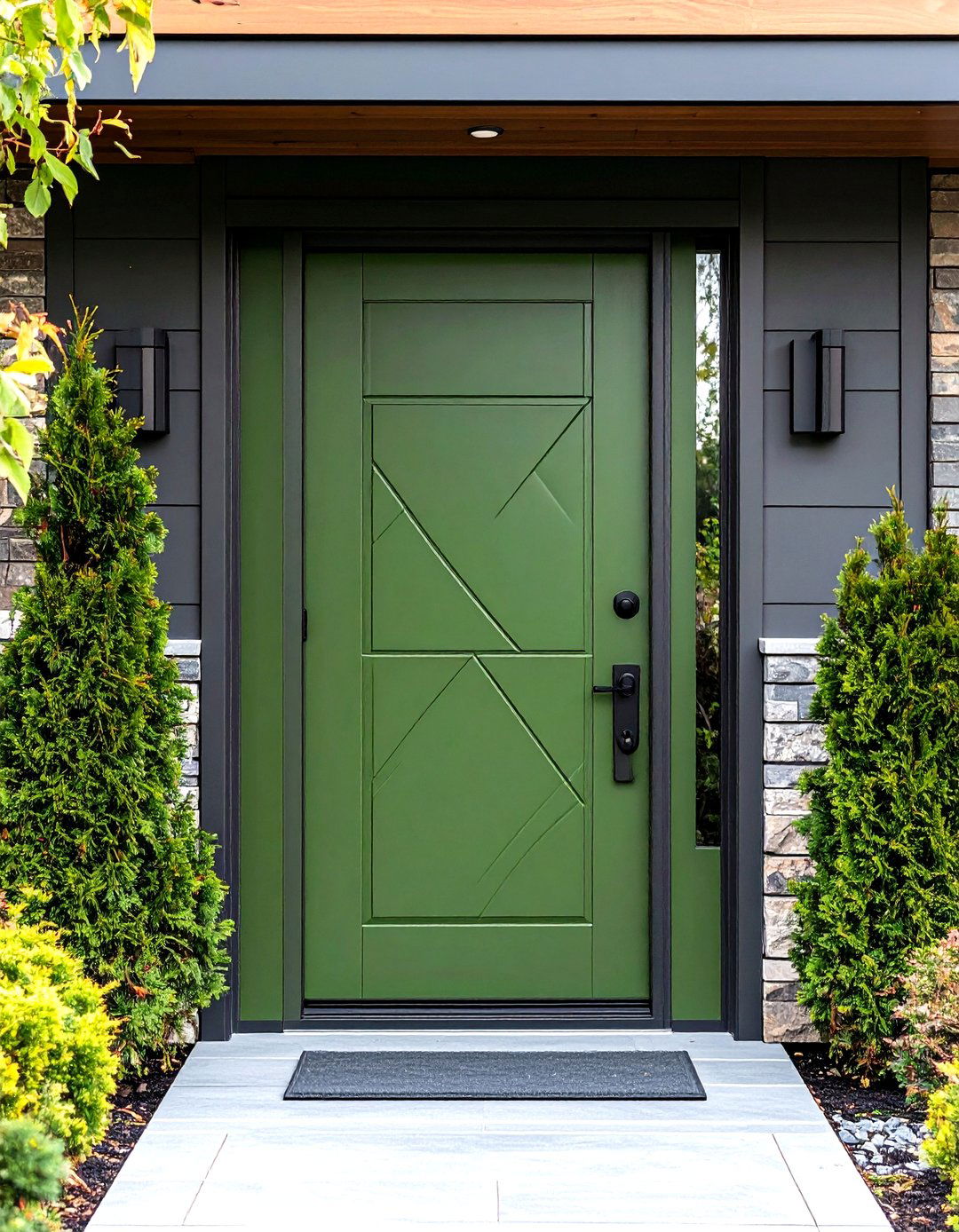
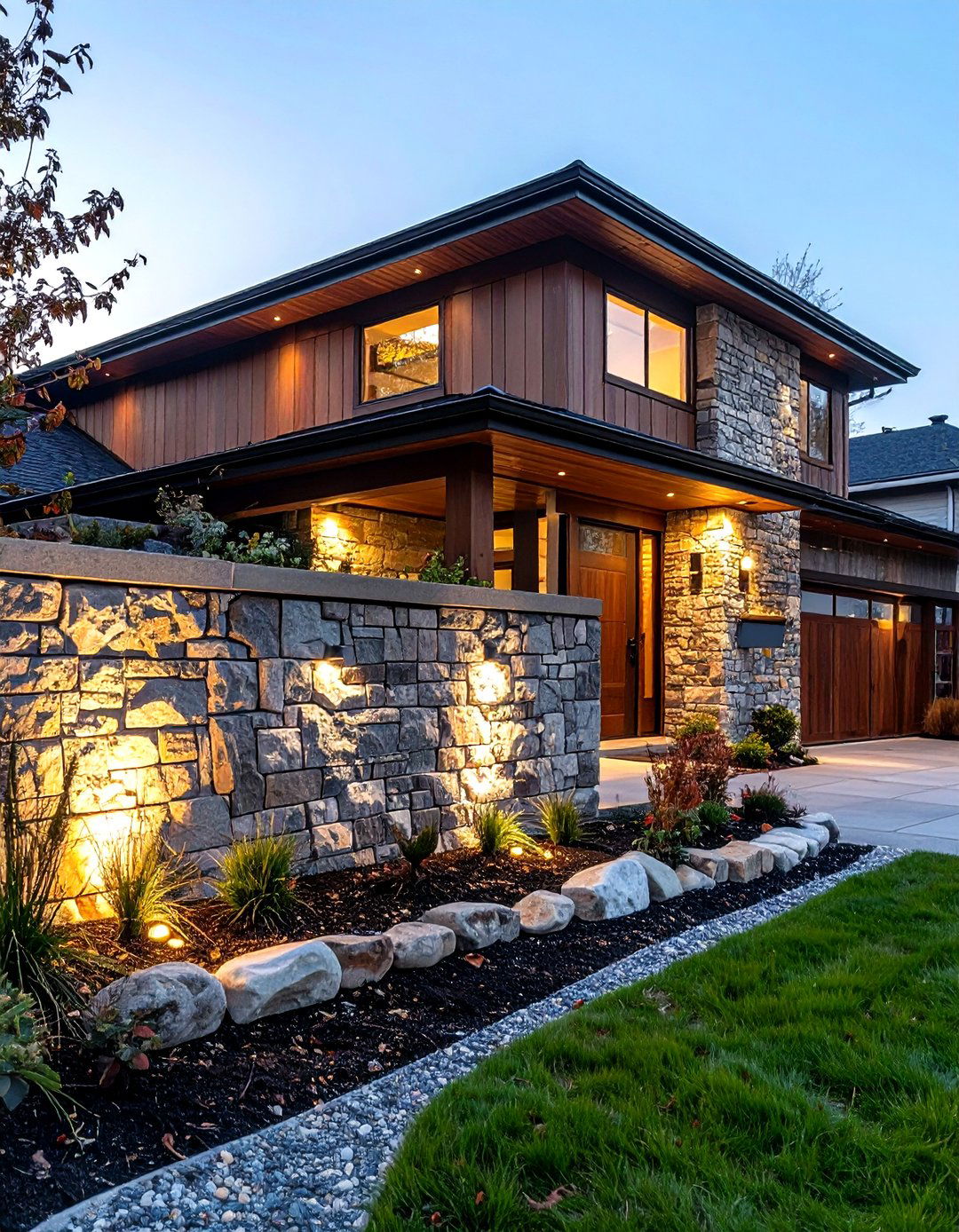
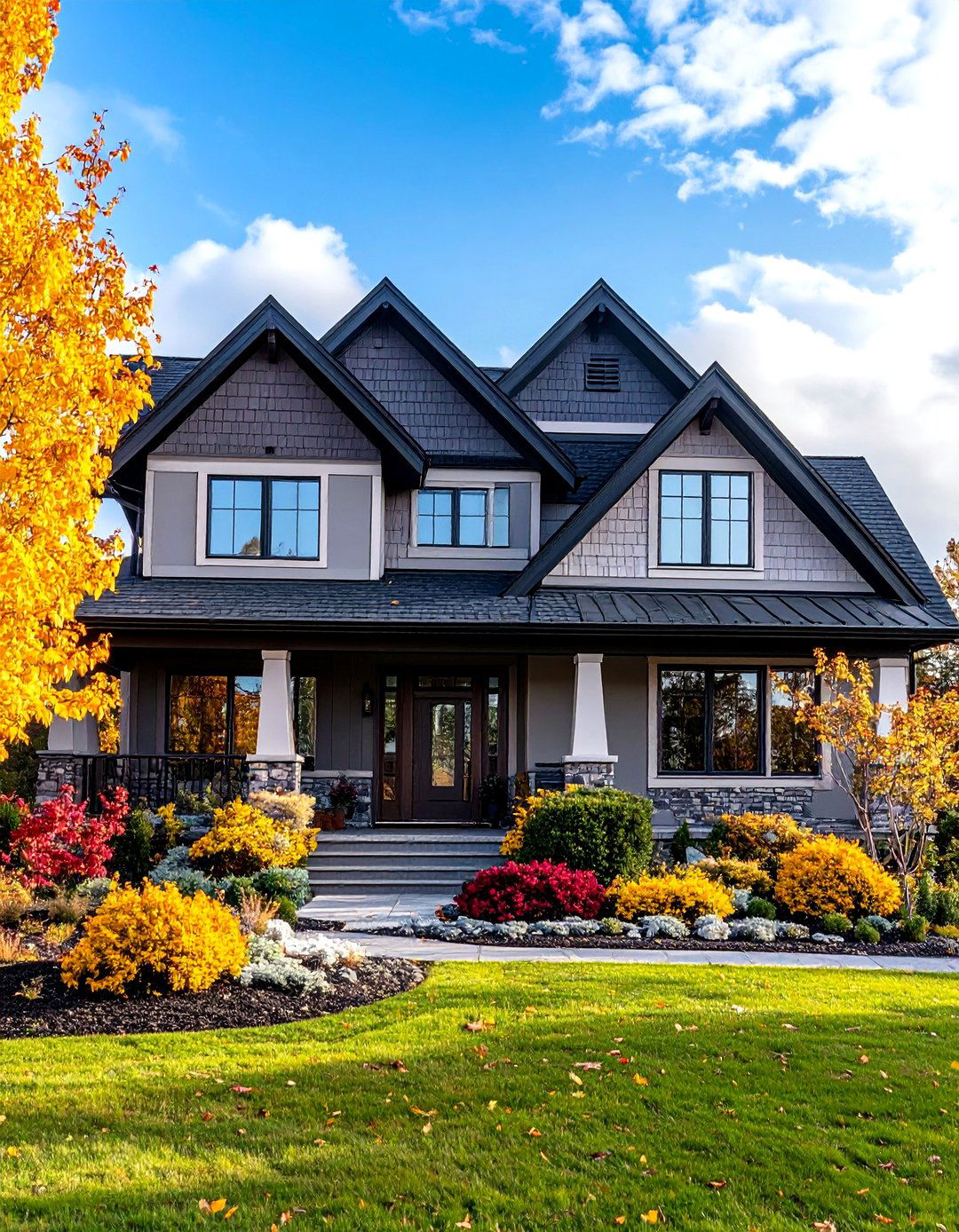
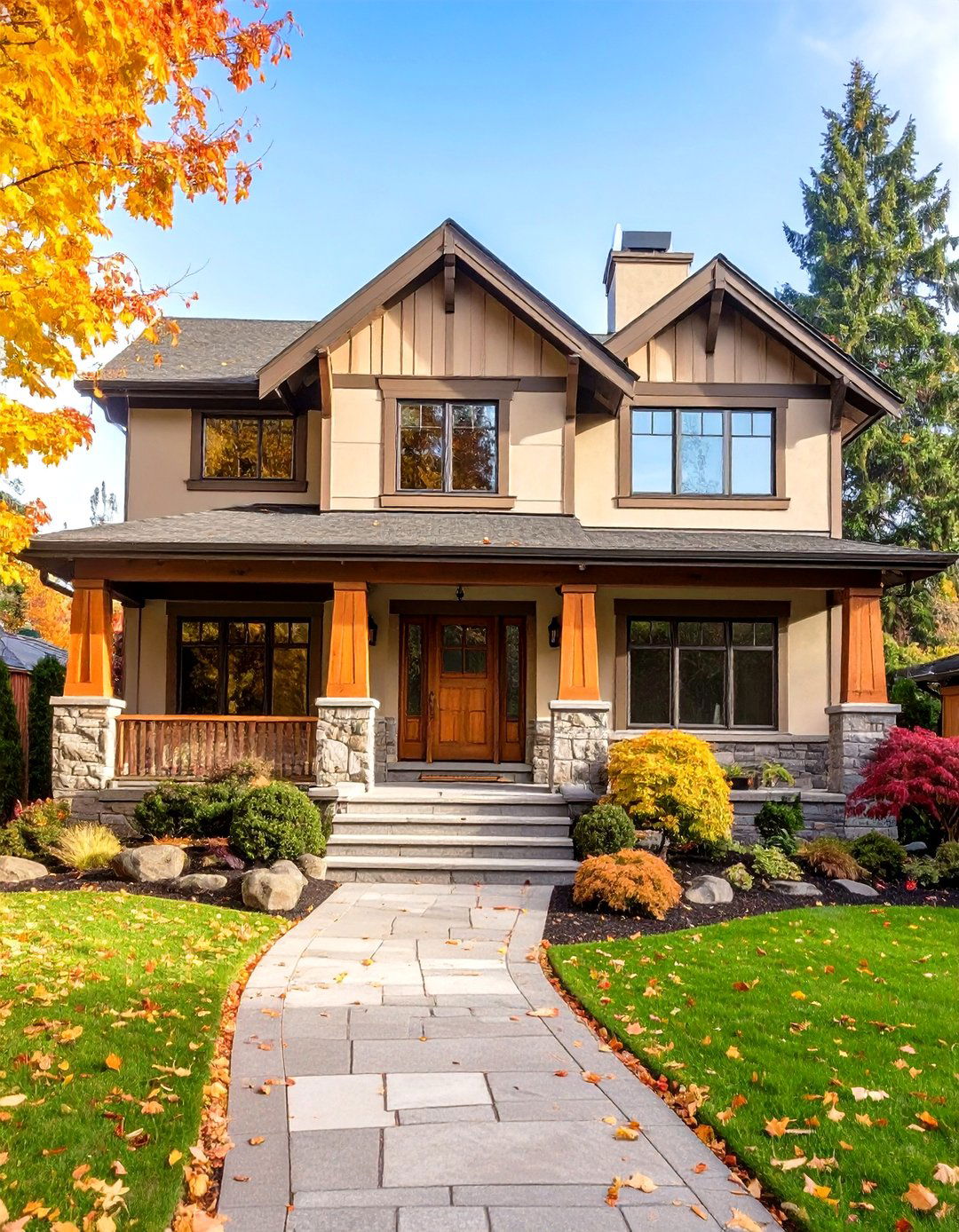
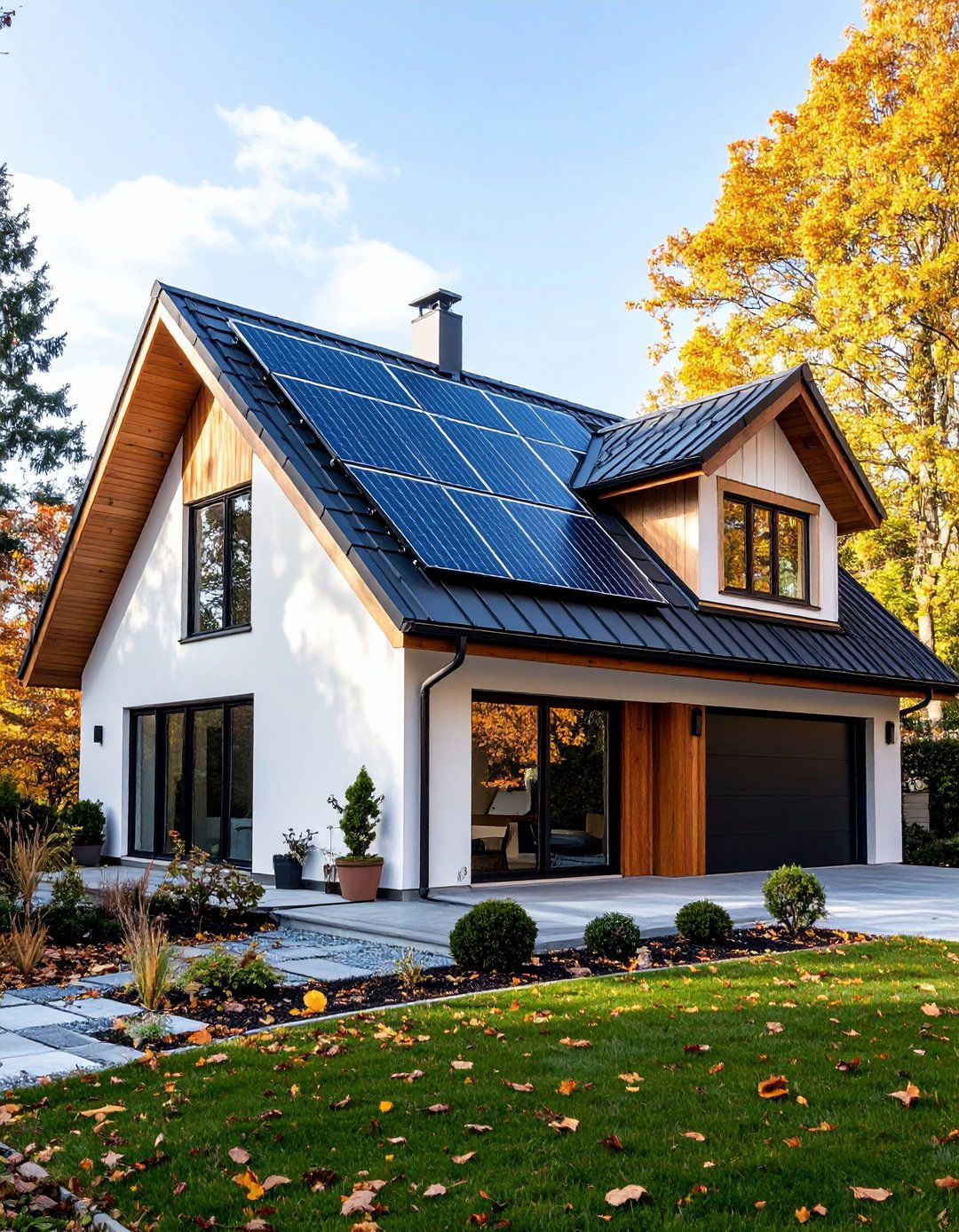
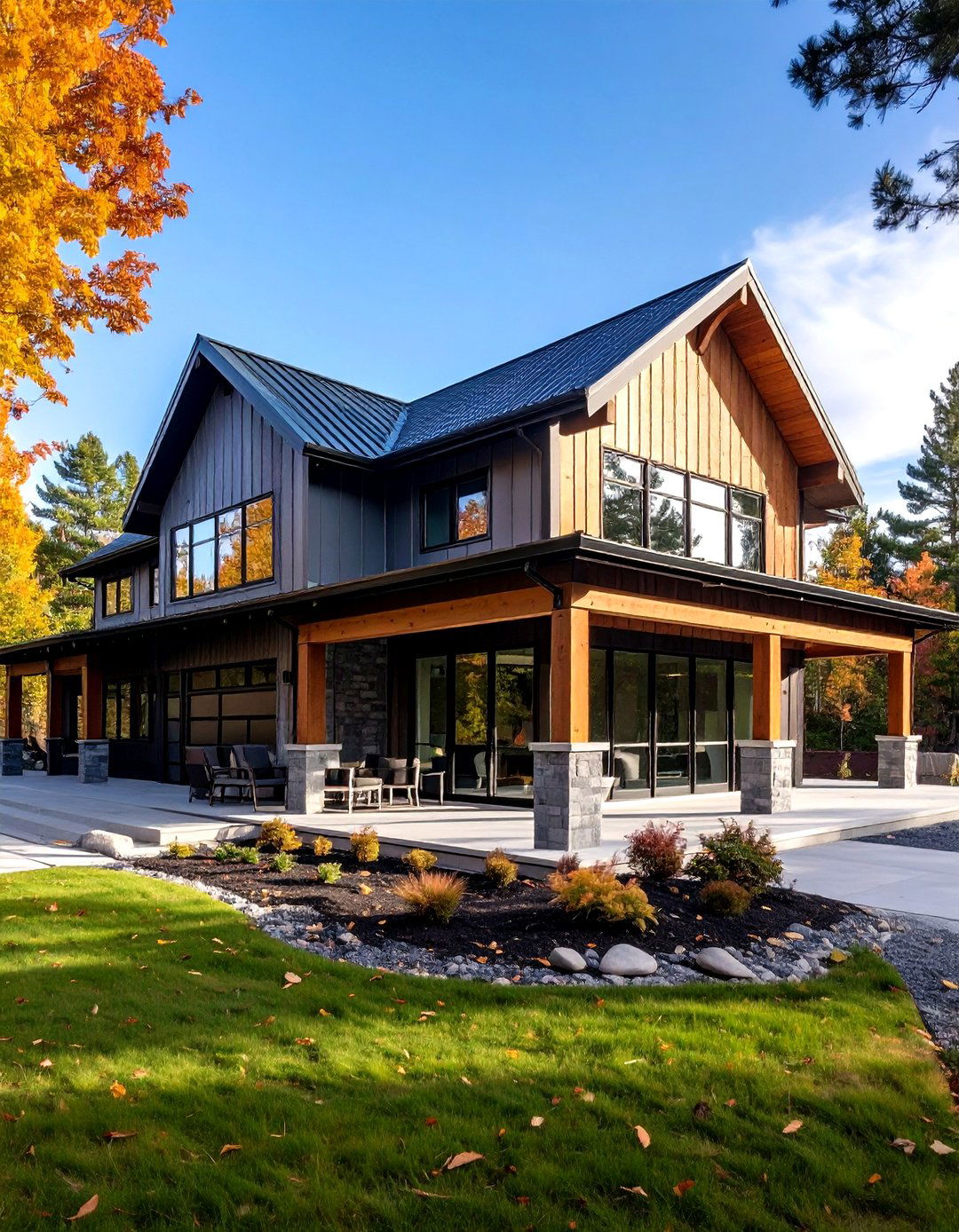
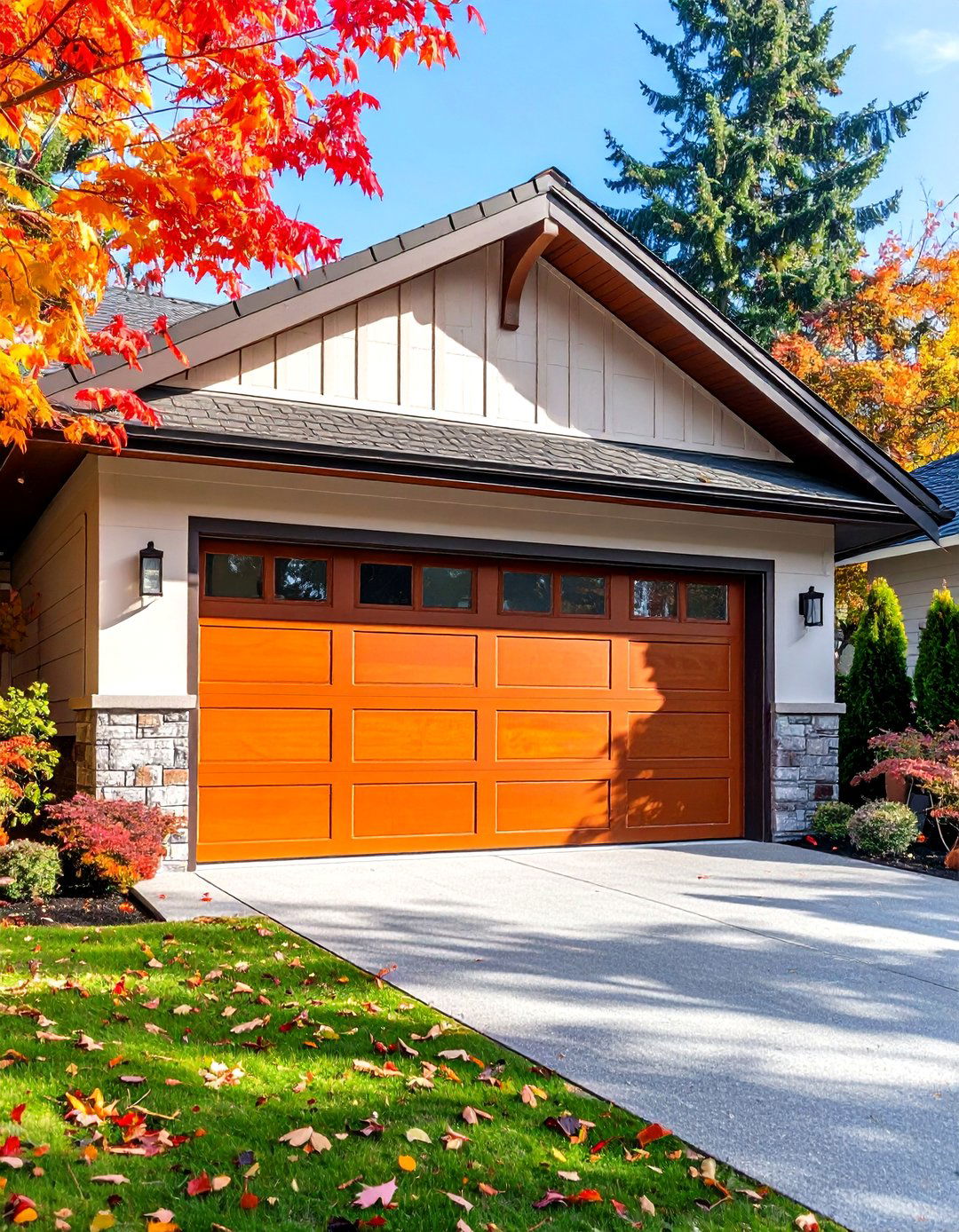
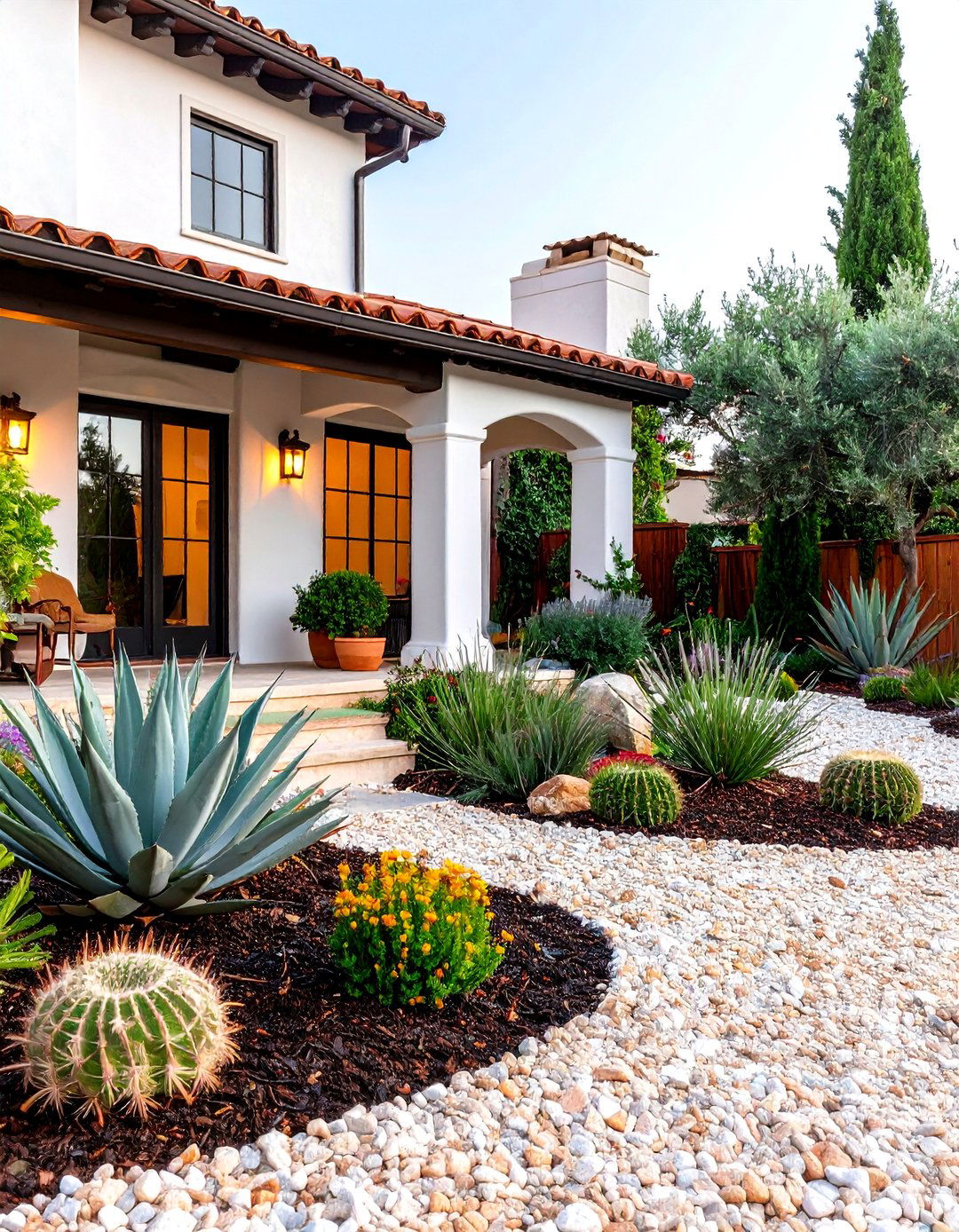
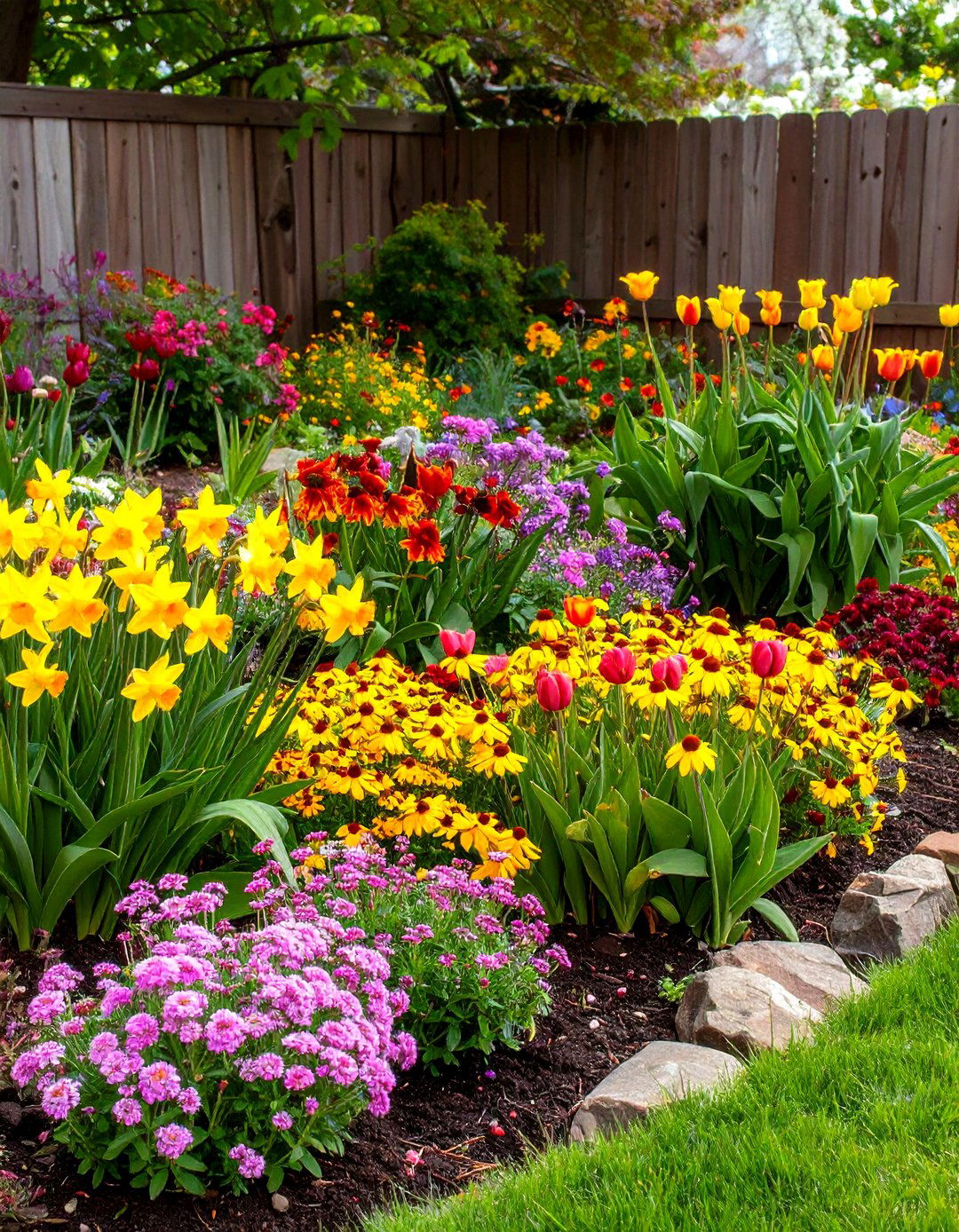
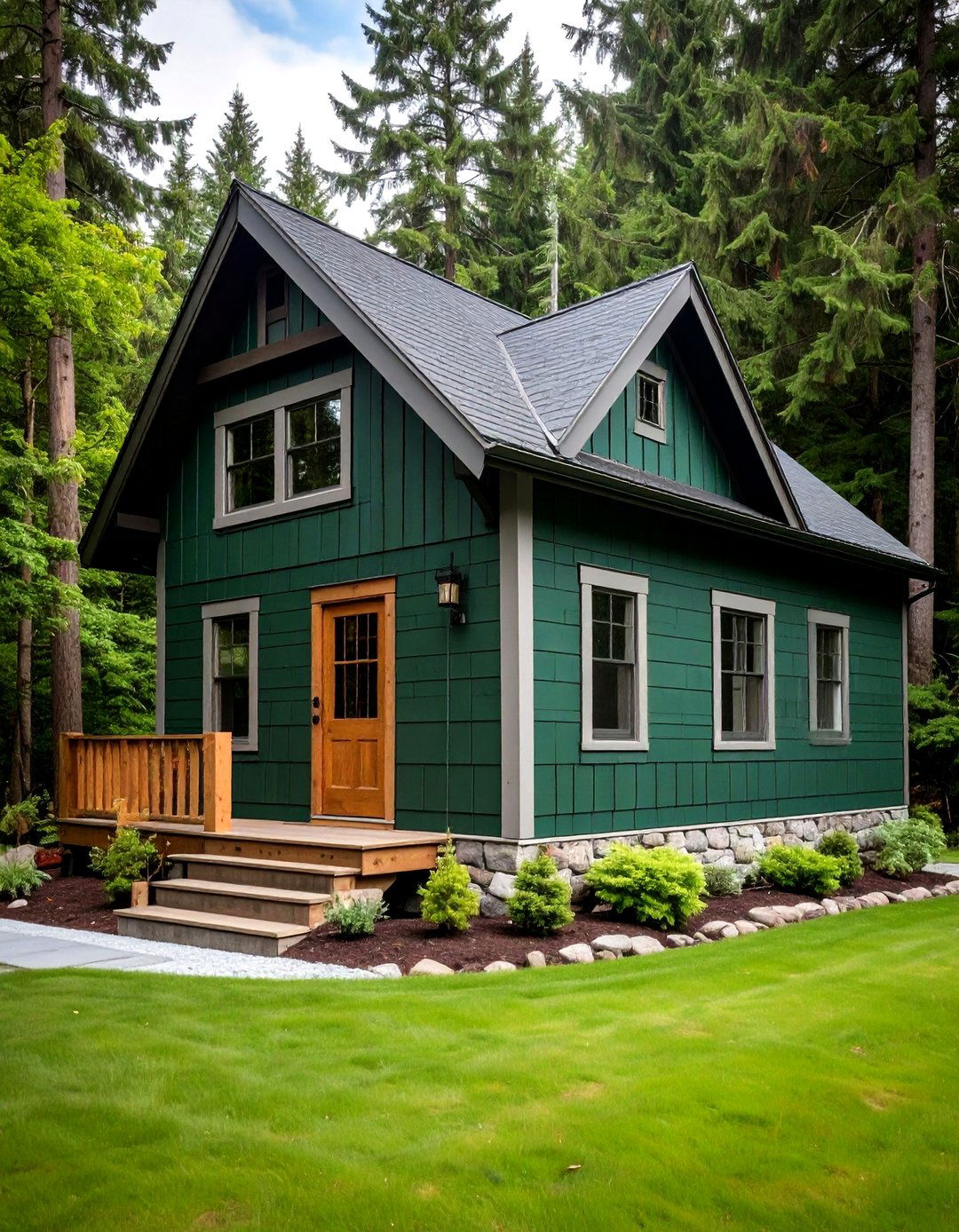
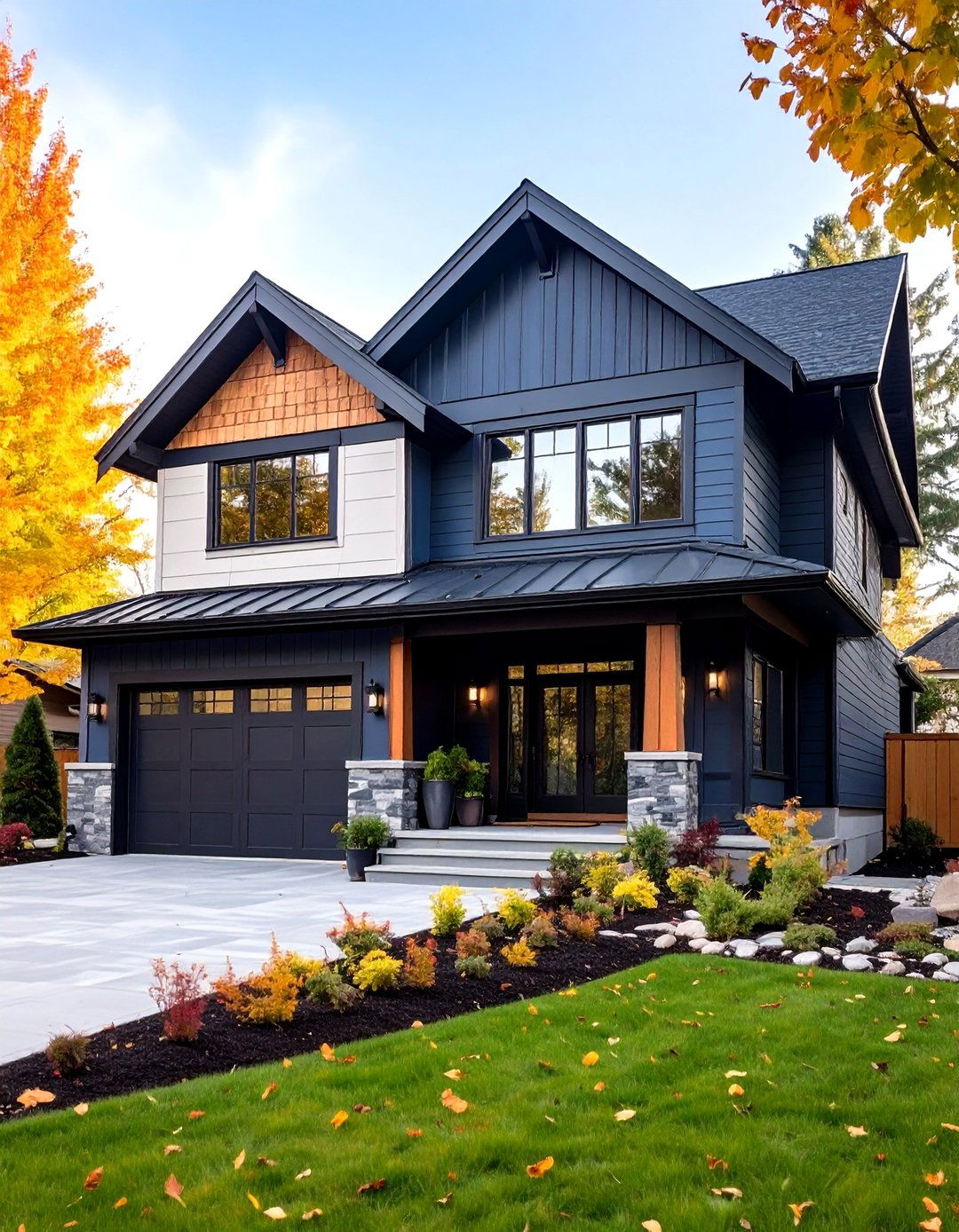
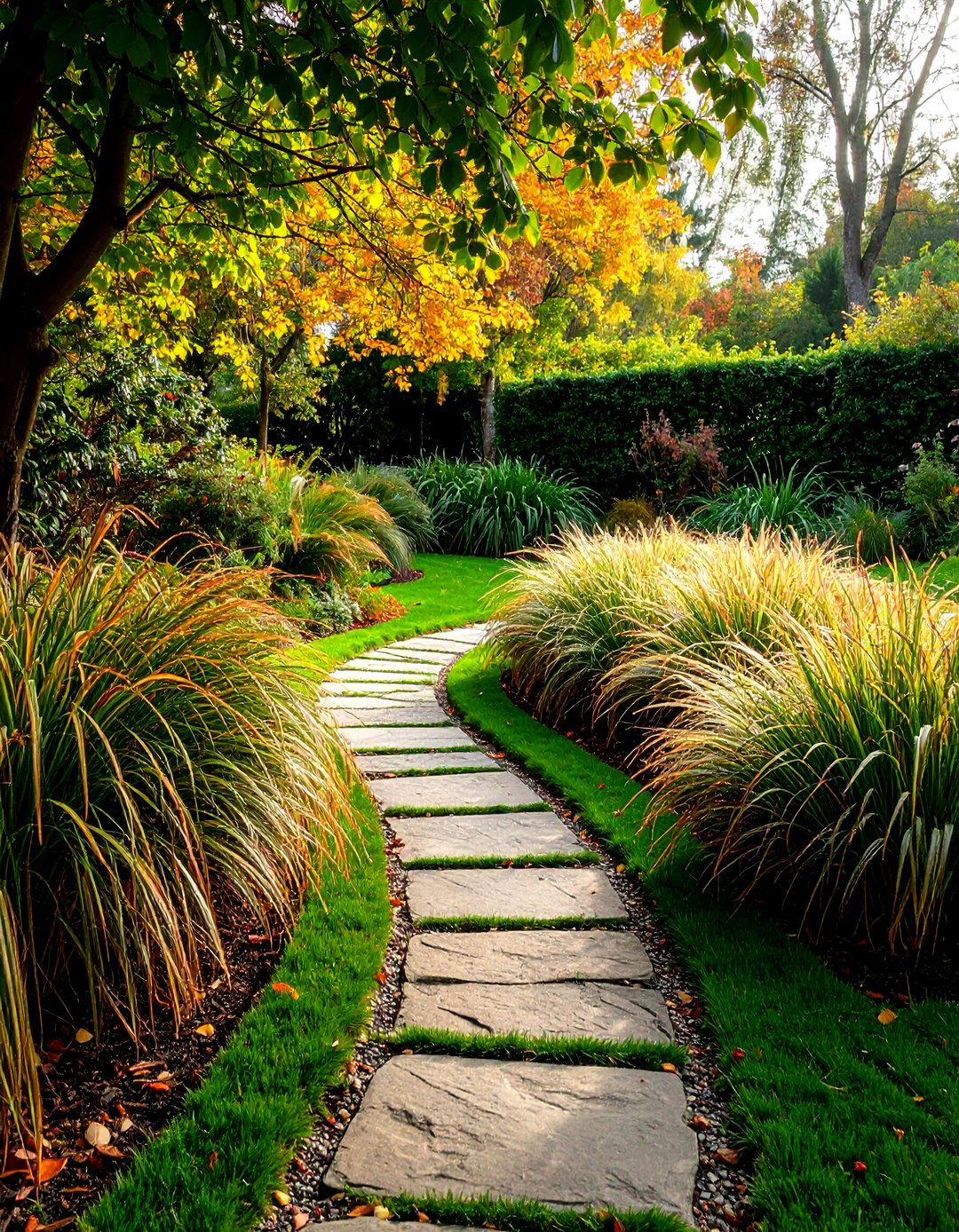
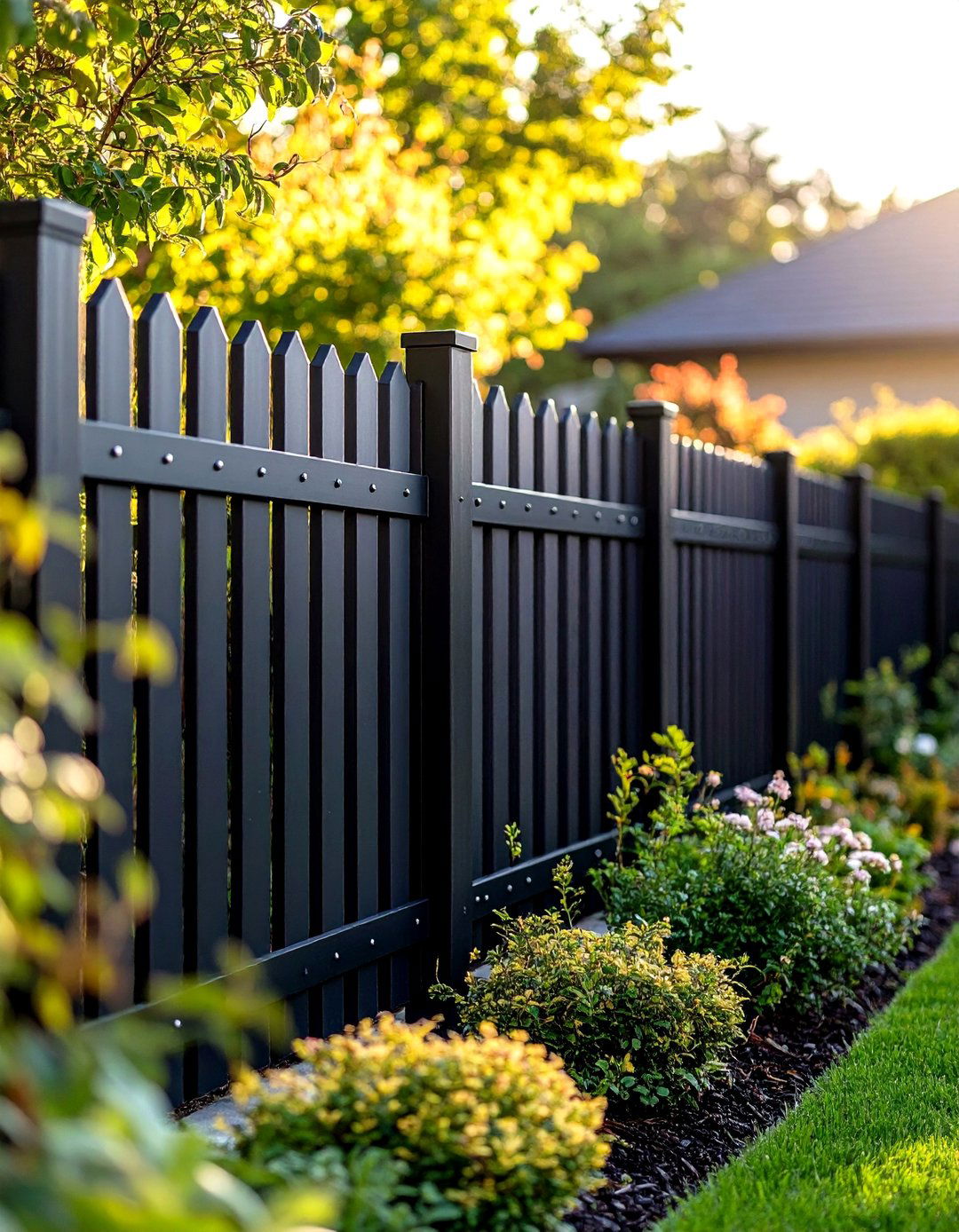
Leave a Reply